The trusted leader and definitive voice of the U.S. cattle and beef industry.
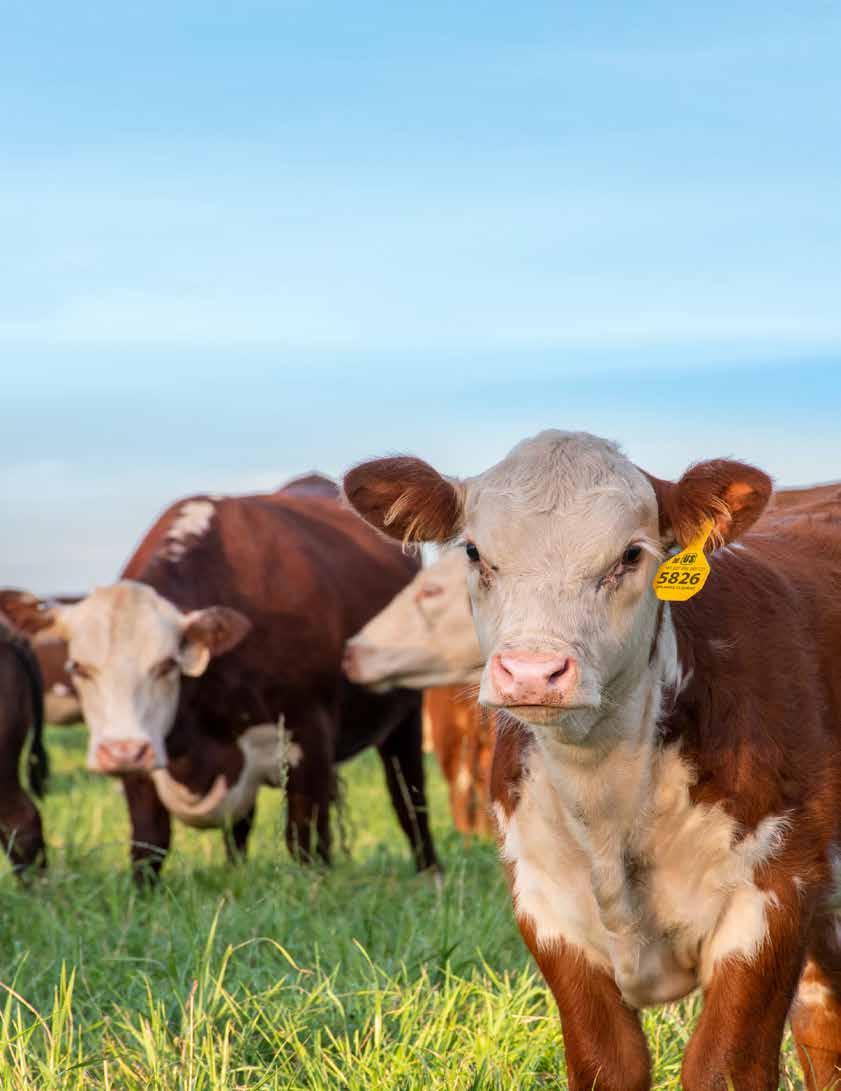
2023 SPRING DIRECTIONS
THE OFFICIAL PUBLICATION OF NCBA
NCBA.org
NATIONAL CATTLEMEN
A passion for cattle starts early. And so should the protection. Treat your pastures with Corteva Agriscience™ herbicides to knock down weeds so your cattle can graze healthier and happier. It’s better for your herd, better for the land and better for your business. And by creating more sustainable acres, you’ll be protecting your passion for this work for generations to come. Find the latest innovations to help you at RangeAndPasture.com





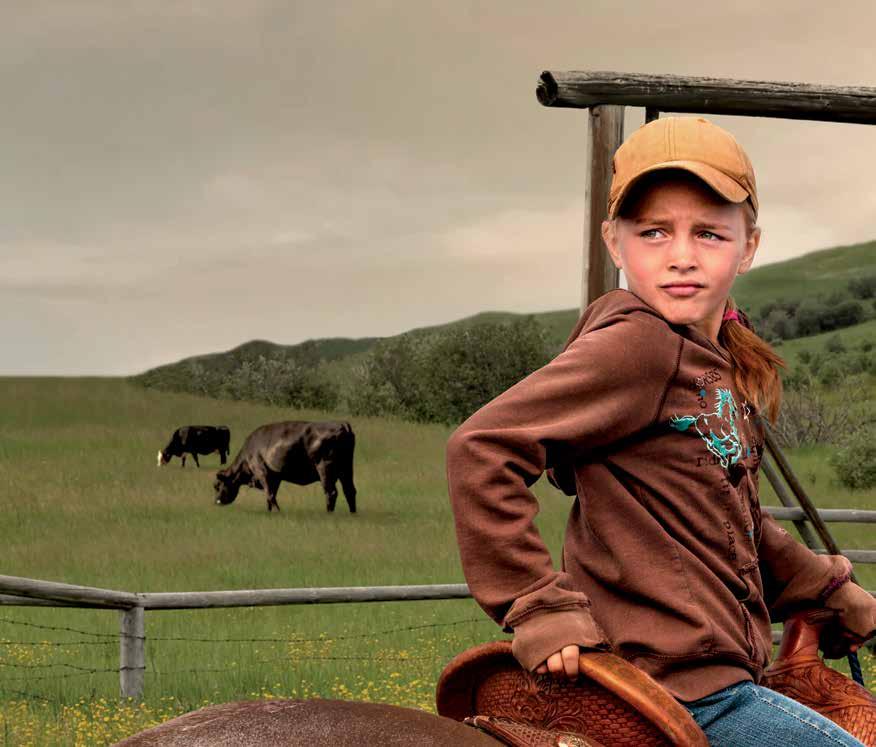
™ ® Trademarks
no
or
of
precautions apply to forage treated with DuraCor and to manure and urine from animals that have consumed treated forage. DuraCor is not registered for sale or use in all states. Consult the label for full details. UltiGraz with fertilizer is available for use with specific herbicides in the states of AL, AR, CO, FL, GA, HI, IA, ID, KS, KY, LA, MN, MO, MS, MT, NC, ND, NE, NV, OK, OR, SC, SD, TN, TX, UT, VA, WA, WI, WV and WY. Contact your state pesticide regulatory agency to determine if a product is registered for sale or use in your state. Always read and follow label directions. © 2023 Corteva. CR38-640-026 (01/23) BR CARP2RANG061
and service marks of Corteva Agriscience and its affiliated companies. GrazonPD3™ is a Restricted Use Pesticide. Under normal field conditions, DuraCor® is nonvolatile. DuraCor has
grazing
haying restrictions for any class
livestock, including lactating dairy cows, horses (including lactating mares) and meat animals prior to slaughter. Label
Table of CONTENTS
Senior Editors
Editor
Contributing Writers
2023 NCBA Leadership:
President Todd Wilkinson
President-Elect Mark Eisele
Vice President Buck Wehrbein
Treasurer Brad Hastings
Federation Division Chair Clark Price
Federation Division Vice Chair Dan Gattis
Policy Division Chair Gene Copenhaver
Policy Division Vice Chair Tim Schwab
Immediate Past President Don Schiefelbein
Chief Executive Officer Colin Woodall
John Robinson
Jill Johnson
Sarah Drown
Wendy White
Grace Vehige
Creative Director Don Waite
Graphic Designer Dancinee Jennings
For ad sales contact Jason Jerome 303-850-3313, Summer Johnson 303-850-3346, Lindsay Clark 303850-3339 or Kate Ramsey 303-850-3321.
Contact NCBA: 9110 E. Nichols Ave., Suite 300, Centennial, CO 80112 (303-694-0305); Washington D.C.: 1275 Pennsylvania Ave. N.W., Suite 801, Washington, D.C. 20004 (202-347-0228).
National Cattlemen’s Beef Association reserves the right to refuse advertising in any of its publications. National Cattlemen’s Beef Association does not accept political advertising in any of
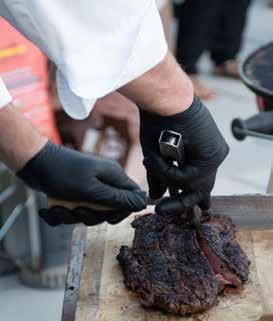
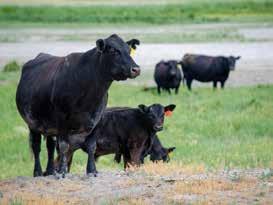
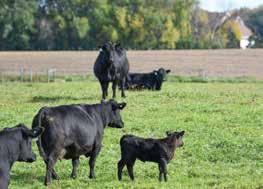

its publications. National Cattlemen’s Beef Association does not accept any advertising promoting third-party lawsuits that have not been endorsed by the board of directors.
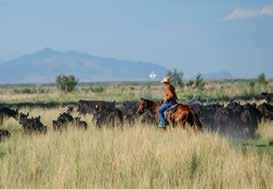
©2023 National Cattlemen’s Beef Association. All rights reserved. The contents of this magazine may not be reproduced by any means, in whole or part, without the prior written consent of the National Cattlemen’s Beef Association.
KEEP UP WITH THE LATEST NEWS www.NCBA.org
Like Us. Follow Us. Watch Us. Hear Us.
NATIONAL CATTLEMEN 1 SPRING DIRECTIONS 2023 4...............................................Letter from the President 6.......................................................Letter from the CEO 8......................................From Headwaters to High Tide 14................................................The Power of Planning 17............................................Attracting the Best Labor 20.......New Technologies for Pregnancy Determination 24............Environmental Stewardship Award Program 30.........................................................Weather Outlook 34.........................................Genetics and Sustainability 42..................................The Hundred Dollar Difference 46....................Keeping Beef at the Center of the Plate 51...........................Feedlot Nutrition in Today’s Climate
THE OFFICIAL PUBLICATION OF NCBA
NATIONAL CATTLEMEN
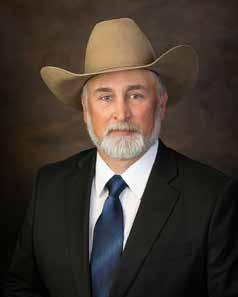

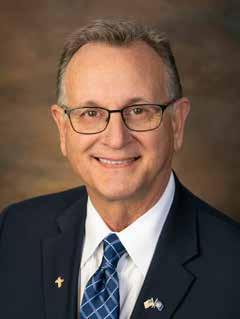
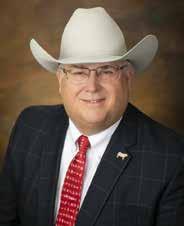
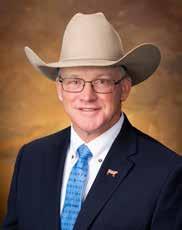


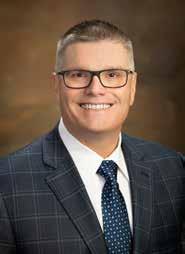
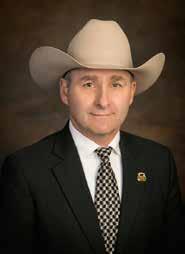
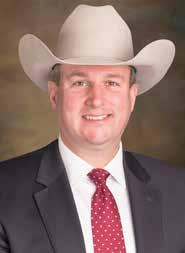
DENVER OFFICE 9110 E. Nichols Ave. Suite 300 Centennial, CO 80112 303-694-0305 membership@beef.org WASHINGTON D.C. OFFICE 1275 Pennsylvania Ave. N.W. Suite 801 Washington, D.C. 20004-1701 202-347-0228
Mark Eisele President-Elect Wyoming
Todd Wilkinson President South Dakota
Buck Wehrbein Vice President Nebraska
Gene Copenhaver Policy Chair Virginia
Tim Schwab Policy Vice Chair Indiana
Clark Price Federation Chair North Dakota
Dan Gattis Federation Vice Chair Texas
Brad Hastings Treasurer Texas
Don Schiefelbein Immediate Past President Minnesota
2 NATIONAL CATTLEMEN SPRING DIRECTIONS 2023
Colin Woodall CEO Colorado
Animal Health International
www.animalhealthinternational.com
Boehringer Ingelheim Animal Health Inc.
www.bi-vetmedica.com/species/cattle.html
Caterpillar
www.cat.com
Central Life Sciences
www.centrallifesciences.com
Corteva Agriscience™ www.corteva.com
Elanco Animal Health www.elanco.com
(Minimum $100,000 Investment)
John Deere www.deere.com
Merck Animal Health
www.merck-animal-health-usa.com
44 Farms
ADM Animal Nutrition, Inc.
Advanced Ag Products
Agri-Pro Enterprises of Iowa, Inc.
AgriWebb
Alltech, Inc.
American National Insurance
Arrowquip
Gravely, an Ariens Company
Greeley Hat Works
Hayden Outdoors Real Estate
Micro Technologies
www.microtechnologies.com
Moly Manufacturing www.molymfg.com
New Holland Agriculture
www.newholland.com
Purina Animal Nutrition LLC
www.purinamills.com/cattle
Ritchie Industries Inc. www.ritchiefount.com
Roto-Mix www.rotomix.com
Zoetis Animal Health www.zoetis.com
Phibro Animal Health
Pneu-Dart
Priefert Ranch Equipment
CHR HANSEN
Envu
Farm Credit Council
Huvepharma, Inc.
Lallemand Animal Nutrition
Neogen
Norbrook, Inc.
Rabo AgriFinance
American Foods Group
Cargill Meat Solutions
Certified Angus Beef
Culver’s
Darden Restaurants
empirical
Fareway Stores, Inc.
Five Guys
McDonald’s Corporation
National Beef Packing
Omaha Steaks
Preferred Beef Group
Tyson Fresh Meats
A.T. Ferrell Company Inc.
Bank of America
Barenbrug USA
Bass Pro Shops/Cabela’s
Behlen Manufacturing
Bimeda
BioZyme
Bush Hog Inc.
Cargill Animal Nutrition
Case IH
CEAT Specialty Tires
CME Group
DATAMARS Livestock
Dell Technologies
Diamond V
ENDOVAC Animal Health
Farmers Business Network
Fera Diagnostics & Biologicals Corp
Ferrell Gas
Food Safety Net Services
Furst-McNess Company
Gallagher
Hyundai Construction Equipment
IMI Global
International Stock Food
International Genetic Solutions
QualiTech, Inc

Quality Liquid Feeds
Ranchbot
International Veterinary Supplies
Jorgensen Land and Cattle
Kent Nutrition Group
Kubota Tractor Corporation
Kunafin “The Insectary”
Laird Manufacturing
Marsh & McLennan Agency
Meat & Livestock Australia, Ltd.
Micronutrients
National Corn Growers Association
Nationwide
New Generation Supplements
Noble Research Institute
PBS Animal Health
Red Angus Assoc. of America R&R Machine Works
RFD-TV
Roper/Stetson/Tin Haul Apparel and Footwear
South Dakota State University
Stone Manufacturing
Superior Livestock
Supreme International
Syngenta
Tarter Farm and Ranch Equipment
TELUS Agriculture
The Hartford Livestock Insurance
The Vit-E-Men Co. Inc./Life Products
Trans Ova Genetics
U.S. Premium Beef
Vaxxinova
Vermeer Vitalix
Vytelle
Westway Feeds
Wild River
Y-Tex
Zinpro Performance Minerals
These are companies that have teamed with NCBA as corporate members, demonstrating their commitment to the beef industry. Their involvement strengthens our future. NCBA members are urged to support these partners in turn by purchasing their products and services. Those who would like to become corporate members with NCBA (securing premium booth placement at the annual convention and trade show as well as other membership benefits), please call the Corporate Relations team at 303-694-0305.
CORPORATE MEMBERSHIP DIRECTORY
NATIONAL CATTLEMEN 3 SPRING DIRECTIONS 2023
PRESIDENTLetter from the
Todd Wilkinson, NCBA President
Advancing for the Future
As farmers and ranchers, we recognize the multitude of benefits that come from fusing purpose to profit. It’s how we operate sustainable businesses while producing a great product that consumers continue to demand. We impact our business and this industry with how we adopt new ideas and technologies to build sustainable growth.

But sometimes, it feels hard enough to keep up with the current, let alone advance for the future. In business, we can’t do it all. Identifying priorities and focusing on what adds value is critical to every business.
Genetics and marketing have always been important to my family’s operation. When I first started raising cattle, our focus was on building the best cow herd we could by identifying genetics that would work for our environment and finishing operation. In 2003, BSE threw our industry a curve ball, and we suddenly found ourselves trying to regain export market share. This signaled a change in marketing and the need to include age and source verification on finished cattle to regain access to export markets, so we did this for an economic advantage. Another shift to our business happened when my son wanted to come back to the ranch. Over the years, Wilkinson Livestock went from a cow-calf and finishing operation to a cow-calf and stocker operation growing cattle for the Prime Pursuits program. An evolving family dynamic actually created value for our business. This move also connected us with breeders using the best genetics and gives us insight on employing the latest cutting-edge science.
My involvement in the industry has shown me that things we have always done, conservation and animal handling practices to be specific, are very valuable across the supply chain, especially to consumers. The opportunity is to continuously improve the way we do these things and look for avenues where improvement in these practices adds value.
Showcasing opportunities for continuous improvement is why we produce the spring issue of Directions magazine for our members. This edition identifies ways to do that by providing you with the latest in best management practices and tools for your operation. Continual improvement by all of us is an investment in the future. So, in the pages that follow, take time to find one or two new ideas, thoughts or methods you can implement on your operation.
The way I see it, advancing for the future is two-fold in our business. There has to be a level of understanding in what works for our unique business models and what doesn’t. We cannot follow every trend out there. But we also must recognize that our industry is ever evolving because our consumer is ever evolving, and the ways to capture profitability are ever evolving. If we’re not focused on advancing for the future, then we’re missing the boat. With increasing operational costs, efficiency and innovation will dictate success. Operating the same as it was done 50 years ago and being resistant to changing market conditions can be a recipe for disaster. Working together, let us retain the best of the past while embracing those innovations that can best lead us into the future.
4 NATIONAL CATTLEMEN SPRING DIRECTIONS 2023
My involvement in the industry has shown me that things we have always done, conservation and animal handling practices to be specific, are very valuable across the supply chain, especially to consumers. "
"



It Only Takes One. Quellaxcin® 100 (enrofloxacin) is a broad-spectrum antimicrobial solution that can be used as a single-dose or multi-day treatment for bovine respiratory disease (BRD). Now available in three sizes. Order today at animalhealthinternational.com Proud to be a Gold Level NCBA Member. 100 mL | 21288984 250 mL | 21288987 09/2022
Making Ourselves Better
Spring is here, and it is a natural time to look at how the year’s fresh start is playing out in each of our lives. For some of you, calving is done, and you are focused on getting every bit of value out of the new calf crop. Many of you are getting tractors and planters ready for field work. Some of you are still praying for rain. Whatever situation you find yourself in, there is probably something you are doing, or plan to do, that is different from what you have done in the past. Making ourselves better by taking advantage of the many educational opportunities that exist is why the U.S. cattle and beef industry is better today than it was even five years ago. A commitment to continual improvement is required for us to continue to do more with less. USDA’s Economic Research Service reported in January that direct on-farm employment accounted for only 1.3% of U.S. employment. We also know that every day we lose more and more agricultural land to development. If we are going to continue our record of feeding the world, we need to learn new tips, tricks and methods for raising our cattle.
This spring 2023 edition of Directions has a lot of information you can use to improve your operation, and that is why this publication has become such an important tool. It is going to present new methods and ideas in a way that is easy to understand and implement. We are proud of our annual spring Directions because it is more than just a magazine, it is a resource you can use today and in the future. This information is part of the commitment NCBA has made to producer education. Our Producer Education team works diligently throughout the year to provide continuing education programs for producers of all ages and all ranges of experience.
One of the highlights of the Cattle Industry Annual Convention is Cattlemen’s College. The number of courses available, presented by top-rate speakers and experts, is really hard to fathom unless you have attended it. We always receive feedback from attendees who intend to take what they learned and implement it back home. Once-a-year training, however, is not enough. Throughout the year, our Producer Education team hosts the Cattlemen’s Webinar Series. These are typically hour-long webinars hosted in the evening on important topics such as managing drought
Making ourselves better by taking advantage of the many educational opportunities that exist is why the U.S. cattle and beef industry is better today than it was even five years ago. A commitment to continual improvement is required for us to continue to do more with less.

Letter from the
or dealing with stress. Want to get more hands-on educational opportunities? Then you need to participate in a Stockmanship & Stewardship seminar. The 2023 tour covers value-added programs, animal health, cattle behavior and low-stress cattle handling demonstrations. If you are concerned that you don’t have the financial resources to attend these training sessions, then you should apply for a NCBA Rancher’s Resilience Grant established by the National Cattlemen’s Foundation and Cargill Protein. Go to ncba.org/producers and search for Rancher’s Resilience Grant to learn how to apply.
When it comes to training and its impact on our industry, nothing does more than the Checkoff-funded Beef Quality Assurance (BQA) program. BQA is the gold-standard of producer education and training by showing you the proper way to handle and administer vaccines and other veterinary products, addressing bio-security protocols on your operation, learning how to safely transport cattle and more. In fact, if you are reading this and are not BQA certified, go straight to bqa.org and start the training. You can learn at your own pace through the various online learning modules. BQA has been a critical component of improving the quality of animal care, the overall quality of our beef, and it was a key element of turning around the downward beef consumption trend we saw years ago.
You can also find local seminars and field days conducted by your cooperative extension agents. Extension has long been a source of information producers can use to improve their operations, the quality of their herds and their financial management. In many cases, extension programs are reliant on the wealth of information gleaned from research conducted at our nation’s land-grant universities. This research is the foundation of continual improvement, not to mention its role in protecting us from animal diseases or helping us treat them once they manifest themselves. NCBA’s Farm Bill priorities include protecting the funds for agricultural research and information dissemination.
Learning something new each day is a trait I believe is important. NCBA is doing our best to help you do the same. Enjoy this edition of Directions, and find a least one new thing you can use to become a better cattle producer.
6 NATIONAL CATTLEMEN SPRING DIRECTIONS 2023
Colin Woodall, NCBA CEO CEO
" "
STANDS OUT IN ITS FIELD
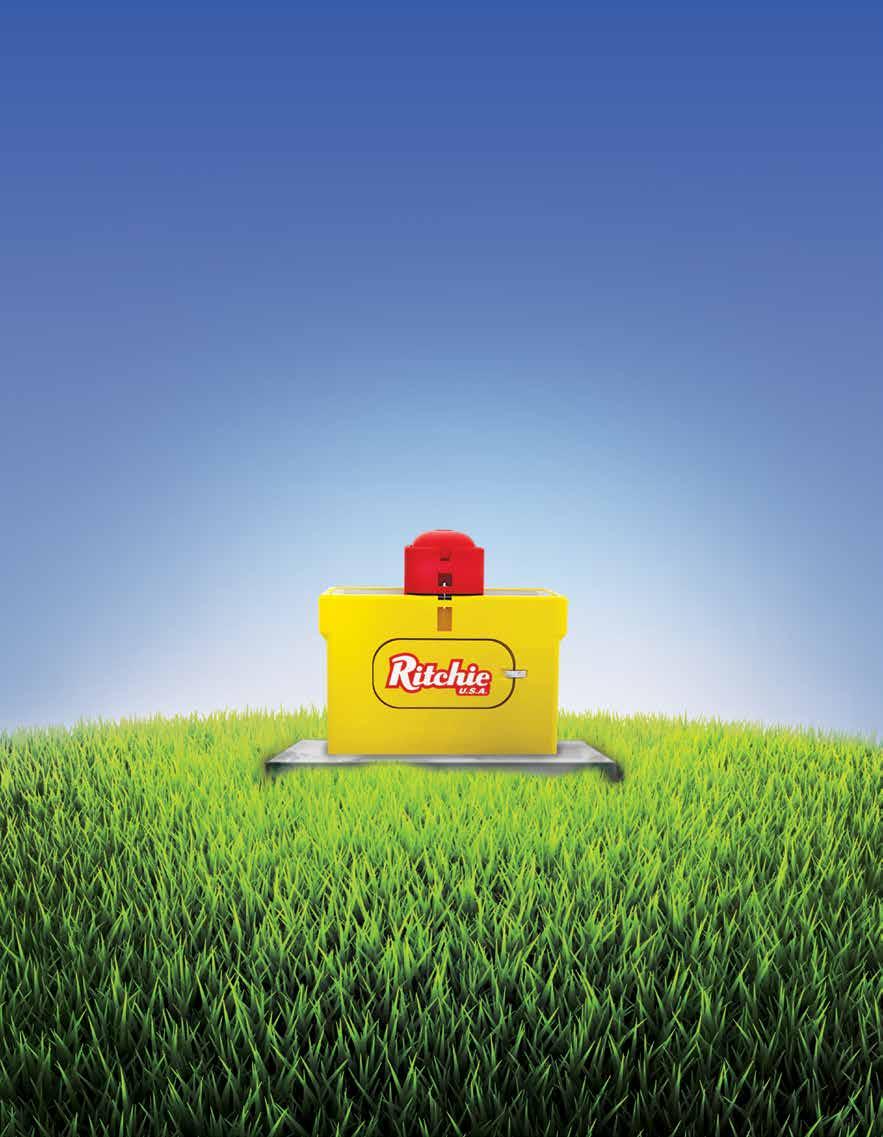
It’s easy to see why Ritchie Waterers stand out from the competition. And it’s not just because they’re red and yellow. Find out how at ritchiestandsout.com

From Headwaters to High Tide
Water’s Impact on Cattle Producers from Coast to Coast

Water is the lifeblood of every living creature on earth, and while it is necessary for our existence, its uncertain availability and timing impact cattle producers differently. In some regions of the United States, drought continues to plague producers, while in other areas flooding poses its own problems on animal well-being and productivity. And if water quantity isn’t an issue, water quality is bound to be a concern.
As the original natural resource conservationists, cattle producers across the country prioritize water management not only to maintain economic stability, but also to share land and water resources with neighbors, communities and future generations. Producers are committed to continuous improvement, which is demonstrated by the production of more beef with fewer inputs. A recent Beef Checkofffunded research study found that between 1991 and 2019, U.S. beef cattle blue water consumption per kilogram of beef decreased by 37.6%, and total water use for the U.S. cattle herd decreased by 29%.1
Water is a complex issue, so where do we begin to discuss its impact on the cattle industry? It all starts somewhere, and Colorado, a headwaters state, is one source for the precious resource, providing water to 18 U.S. states and Mexico. Rivers begin with melting snow high in the Rocky Mountains, as a trickle that gathers momentum through streams and tributaries, eventually becoming powerful waterways that carve canyons and provide water to millions of people and animals downstream.
The Continental Divide (also known as the Great Divide) traverses from Alaska south through Canada, the United States, Mexico, Central and South America, ending up at the southernmost point at the Strait of Magellan in Chile. In the continental U.S., this dividing line diverts water either toward the Pacific Ocean to the west or the Gulf of Mexico or Atlantic Ocean to the east.
As we follow the flow of water from headwaters to high tide, cattle producers share their stories of tragedy and triumph related to this essential resource. Our journey begins on Colorado’s Eastern Plains.
CONTINENTAL DIVIDE
8 NATIONAL CATTLEMEN SPRING DIRECTIONS 2023
Manuello’s Inc.
Sterling, Colorado
Gene Manuello’s ranch lies 6 miles north of the small northeastern Colorado town of Sterling in the South Platte River Valley. Proud to raise “corn, alfalfa and T-bones,” Manuello is the third generation to manage the diversified operation, which began in the late 1920s. Even with senior water rights providing Manuello with early and primary access to available water, their biggest challenge is drought.
To survive in semi-arid conditions, with precipitation averaging 15 inches a year, Manuello use sprinklers to water crops, which use water efficiently and can help increase yields. Lagoons on their 3,000-head feedlot capture runoff, protecting the integrity of surface and groundwater. In addition, since the early 2000s, groundwater depletions have been replaced through augmentation which has made the river healthier.
Manuello also manages grazing rates based on the condition and quality of grasses, preventing overgrazing and overuse. Unfortunately, recent drought has degraded the condition of grasses, and it will take several years for pastures to fully recover.

Manuello lives and breathes water. Even when he is not managing resources on his own operation, he is actively involved with local organizations such as the Northern Water Conservancy District, Lower South Platte Water Conservancy District, Logan Well Users, Colorado Ag Water Alliance and Sterling Irrigation Ditch Company as well as the Colorado Cattlemen’s Association.
“Farmers and ranchers are the best stewards of land, but we need to make a living off what we own, growing crops and raising livestock,” Manuello said. “If we don’t the keep land and water in the best condition, then we can’t reap the benefits.”
Next, we travel to the West Coast, where producers in California and Washington share unique perspectives about water quantity and quality and their impact on cattle and communities.
Average Annual Precipitation: 15 inches
FACTS
Water is the most common substance found on earth.
Water is the only substance found commonly in all elemental forms: solid, liquid and gas.
One gallon of water weighs 8.34 pounds.
The average American family uses more than 300 gallons of water per day at home, with roughly 70% of this use occurring indoors.2
NATIONAL CATTLEMEN 9 SPRING DIRECTIONS 2023
Koopmann Ranch Sunol, California
Located an hour’s drive from the San Francisco metropolis, Koopmann Ranch sits in a valley of productive annual grasslands surrounded by steep ridges. Tim Koopman manages the ranch that was originally purchased by his grandfather and greatgrandfather in 1918 for $35/acre. Born and raised on the ranch, Koopman knows first-hand how drought conditions have impacted his family over the years.

Severe drought in 1975-77 almost caused the family to liquidate and, in the mid-1980s, cattle were shipped to Oregon to accommodate drought conditions. More recently, droughts have run together the last several years, with the ranch receiving only about half the average annual rainfall (10 inches) each year. The lack of rain has impacted forage production and stock water.
Man-made stock ponds were built through the Natural Resources Conservation Service in the ‘50s and ‘60s, however, springs were not productive, and ponds did not fill. Utilizing the Environmental Quality Incentives Program, Koopman developed springs on the ranch and installed solar pumps, which helped move water (and cattle) to ridge tops allowing for a better utilization of pastures.
In addition to drought, the planting of almond and walnut trees in surrounding areas is impacting water availability. Wells as far as 2,000 feet deep are being drilled, drawing a huge amount from the aquifer and rendering shallow wells non-productive.
While lack of rain has been the primary challenge for the ranch throughout its history, the new year brought heavy downpours which blocked culverts and flooded the Koopmans’ hay barn and destroyed expensive feed. Uncompacted fill material from a neighboring property also ended up on Koopman’s ranch, leaving 152 truckloads of material to clean up.
Despite water challenges, either too much or not enough, Koopman continues to manage cattle numbers, develop rotational grazing plans, and monitor for noxious invasive species all for the benefit for everything living on the ranch, including
endangered species. Koopman has created a conservation easement and worked with the Natural Resources Conservation Service to reconstruct spillways preserving ponds which provide habitat for the California Tiger Salamander as well as endangered frog species and butterflies. The ranch is also home to 92 nesting boxes for the Western Blue Bird. Koopman understands that everything needs water, and the ranch plays a vital role in providing the lifepreserving resource for a host of different species.
“I’m not afraid of having endangered species on the ranch,” Koopman said. “Their presence shows that we’ve done a good job of managing our property.”
Koopman is actively involved with state and local Farm Bureaus, cattlemen’s organizations and serves on the Environmental Stewardship Award Program Committee. In addition to his community involvement, Koopman regularly hosts guests, including the Rangelands 101 class from the University of California-Berkley. Each year students come to the ranch often with incorrect pre-conceived notions about ranching. Koopman takes the opportunity to show what actually goes on, and after a tour, meal and a few conversations, he has changed some minds.
“If we don’t take care of the land, it will not provide for us,” Koopman said. “We must work with Mother Nature to manage lands to benefit all living things.”
10 NATIONAL CATTLEMEN SPRING DIRECTIONS 2023
Photo provided by Koopman family.
Rose Ranch South Bend, Washington
Located 2 feet above sea level and only 50 feet from Willapa Bay, water surrounds Rose Ranch. Third-generation rancher Jim Rose is committed to maintaining water quality and preserving his family’s 100-year-old cattle ranch.

Rose’s grandfather was a meat cutter by trade and drove cattle into the area using a Model T. The family raised cattle for the local butcher shop they owned in a nearby town. Before the farm was established, water flowed over fields during high tide, but a series of tide gates and pipes were installed early on to prevent field flooding.
Today, Pacific County, Washington, is not cow country, and there are only two full-time cattle producers in the area. The environment is more conducive to oysters, which is big business in South Bend, the self-proclaimed “Oyster Capital of the World.”
Oysters are filter feeders, and if the water is dirty they become unsellable. The state department of health tests water in the bay regularly, so water quality is paramount. Rose works closely with his oystermen neighbors to keep the water clean. Exclusion fencing keeps cattle from entering water sources, and rotational grazing keeps cattle moving. Rose also reduces swampy areas to keep cattle standing in clean, dry sod.
With so much rain, Rose struggles with mud and uses shavings from local sawmills to provide dry bedding, especially during
calving season. He also uses oyster shells in hightraffic areas to reduce mud and runoff.
In addition to the cattle enterprise, Rose contracts with a logger to harvest timber each year, which provides an additional source of income. The timber is on a 50-year rotation plan with 5-10 acres harvested each year. Depending on the tree species, logs travel to different processing facilities to be used in a variety of products.
Rose works closely with his neighbors in numerous ways including serving on the Farm Forestry Association, Voluntary Stewardship Program as well as the local Conservation District and School Board. With his sons managing some of the daily ranch operations, Rose’s time has freed up to volunteer more, including lobbying the legislature regarding issues affecting agriculture.
“Our industry is under so much scrutiny, but as a whole producers are very conscientious of our own impacts,” Rose said. “We may face different challenges, but we continuously improve, because if we don’t, we’ll be regulated out of business.”
NATIONAL CATTLEMEN 11 SPRING DIRECTIONS 2023
Average Annual Precipitation: 90 inches
Photo provided by Rose family.
Dee River Ranch
Aliceville, Alabama
Sometimes it isn’t about too much or too little moisture, but rather the timing of precipitation. States in the Southeast often receive enough rainfall, however, it doesn’t arrive at the right time. One producer in Alabama has learned how to capture and redistribute the precious resource.
While Annie Dee didn’t grow up on a farm, her father’s investment property in Florida eventually led her to a career in cattle in Alabama. Dee’s father purchased property in Florida in the 1950s, which he sold to the Southwest Florida Water Management District in 1989. The family then moved to Alabama, and Dee became a first-generation producer, along with her brother, Mike. Dee River Ranch now grows corn, soybeans and timber, in addition to raising crossbred cattle with Angus, Brahman, Hereford and Charolais genetics.


While Aliceville, Alabama, receives nearly 60 inches of rain each year, its timing is problematic. Most of the moisture arrives in the winter, making pastures muddy. It gets dry in the summer, and row crops don’t receive the rain they need to survive. To collect water in the winter and store it for use during the growing season, the Dee family built a 115 surfaceacre reservoir.
“The reservoir helps us capitalize on the rainfall we receive, even if it doesn’t come at the right time,” Dee said. “It’s also important to conserve whatever water resources we receive.”
While the reservoir helped solve the problem of redistributing water resources, the winter rain still created muddy areas where cattle can get bogged down. More than 15 years ago, Dee worked with the Natural Resources Conservation Service and the Environmental Quality Incentives Program to install fabric, rock and sand around gates and water/feed troughs which reduced mud in heavy use areas and improved how animals and people get around.
Dee River Ranch incorporates no till practices to minimize wind and water erosion, and cover crops help protect the soil and keep fertilizer in place. Dee understands that their efforts directly impact others since water in local creeks and streams eventually ends up in the Gulf of Mexico.
“We are simply caretakers of the land,” Dee said. “By improving soil health and reducing erosion and runoff, we can leave the land better than we found it, which benefits both the environment and the operation.”
Dee’s dedication extends beyond the farm gate through her involvement with local conservation associations as well as serving on the board of the West Alabama Food Bank. She is passionate about making sure people in the community are fed and believes that everyone can make a difference by ensuring people have the food they need to eat, thrive and exist.
12 NATIONAL CATTLEMEN SPRING DIRECTIONS 2023
Average Annual Precipitation: 56 inches
Photos provided by Dee family.
Overhome Farm Crozier, Virginia
Finally, our journey ends on the East Coast where concern for downstream neighbors drives a Virginia producer’s desire to protect water quality.

In the rolling hills of Virginia, 20 miles west of Richmond, Overhome Farm receives adequate precipitation to keep fields green, providing cattle with the nourishment they need throughout the year. Located only one mile from the James River, which eventually drains into the Chesapeake Bay, maintaining water quality is the primary focus for Ronnie Nuckols and his family.
The land where Overhome Farm rests is steeped in history, originally deeded in 1717, with tobacco as the primary crop for more than 100 years. In 1876, Nuckols’ great-grandfather purchased the property, which was mostly left fallow except for raising food to keep the family self-sufficient. For 70 years the land and soil healed, then the property entered active production once again with Nuckols’ grandfather harvesting timber in 1950 and starting a commercial cow herd in the 1960s.
When Nuckols took over part of the farm after his father passed in 2008, he needed to change his thinking regarding land and soil management. He had worked 35 years in the excavation and grading business, removing topsoil and replacing it with gravel or buildings. Once he started working with cattle, Nuckols realized the true value of soil.
Cattle once roamed freely among three 100-acre pastures and had access to perennial streams and ponds across the property, but when Nuckols began managing 175 acres of the farm, he installed interior fencing to establish a rotational grazing plan. Nuckols also worked with the local water and soil district to install a 35-foot buffer along all streams and ponds, keeping cattle out and decreasing erosion and sedimentation. There is now a pumping station at one pond, which transports water to a storage tank at the top of the property that funnels water to 12-13 water stations located throughout the pastures.
When Nuckols first created the buffer zones he thought he was losing grazing land, however, by implementing a
Average Annual Precipitation: 42 inches
rotational grazing plan he more than made up for the buffer loss. In addition, an unintended benefit was the walking trail created around the property that Nuckols and his family enjoy, creating lasting memories.

“If cattle were in those streams, the memories we’ve made as a family would have never happened,” Nuckols reflected.
Nuckols shares his experiences with others by serving as a director on the local soil and water district, engaging with cattlemen’s associations, and mentoring farmers and ranchers through the Natural Resources Conservation Service’s mentor program. His efforts, along with those of other farms along the James River, are having a cumulative positive impact downstream and are creating better landscapes by keeping the land covered, creating healthy stands of good grass, and reducing runoff to streams.
“Before we fenced out cattle from streams, shorelines were ruined,” Nuckols said. “Now, vegetation has grown back, and we are helping preserve the Chesapeake Bay downstream. Oyster harvests there have improved, and we played a role in making that happen.”
To the land and livestock, water is crucial, and it is a resource that farmers and ranchers across the country work hard to protect.
Sources:
1. Klopatek, S. C. and J. W. Oltjen. 2022. How advances in animal efficiency and management have affected beef cattle’s water intensity in the United States: 1991 compared to 2019. J. of Anim. Sci. 100(11). doi:10.1093/jas/skac297
2. EPA, https://www.epa.gov/watersense/how-we-use-water
NATIONAL CATTLEMEN 13 SPRING DIRECTIONS 2023
Photo provided by Ronnie Nuckols.
The Power of Planning
How You Can Set Yourself Up For Success
We can’t anticipate every issue we face on our farms and ranches, but we do know where some vulnerabilities exist for our industry. The threat of a foreign animal disease outbreak is one of those vulnerabilities. So, how do we address the problem? By preparing as best we can. The concept of an electronic animal disease traceability system isn’t new, but the COVID-19 pandemic and recent disease outbreaks in foreign countries is bringing the need for electronic identification (EID) as part of a traceability program back to the forefront of the industry.
As technology improves, producers are starting to realize the benefits of EID as a management tool along with a means for safeguarding the industry.
When a 2005 tuberculosis (TB) outbreak in northwestern Minnesota shut down Don Schiefelbein’s family farm — more than 200 miles away from the infected area — he learned firsthand how valuable a producer-led animal identification and disease traceability system could be to his operation and the entire beef industry.

“The government took an arbitrary response to shut down cattle movement across all of Minnesota, regardless of our distance from the outbreak, until we proved we didn’t have TB,” he said. “The ironic thing is that Canada and North Dakota are both just 25 miles from the outbreak area, but they were not required to shut down.”
The stop movement order happened a couple of months before the Schiefelbein Farms production sale. The family went from prepping cattle for sale with hopes to send bulls to buyers from up to 15 different states to proving they were TB free so they could get their market back.
“The state created this magical boundary, and even though the eastern part of North Dakota was closer to the outbreak than we were, we couldn’t send cattle to that state. We rely on a network of buyers from out of state and that market was closed to us immediately, without warning,” he added.
After the stop movement order, Schiefelbein Farms had to prove that their herd was TB free. This meant running their entire herd, around 1,000 cows, through the chute twice to test them for the disease. It took several years of negative testing before Minnesota became TB free.
“If a national, electronic animal disease traceability system had been in place in 2005, the tuberculosis outbreak could have been regionalized in a matter of hours, and our family wouldn’t have had to spend months proving that our herd was TB free,” Schiefelbein said.
Dealing with that disease outbreak was a risk assessment for the farm. They learned quickly that it’s well worth putting safeguards in place. In the wake of that incident, Schiefelbein Farms implemented the use of EID tags on their operation.
While an electronic animal disease traceability system only requires four data points for a disease trace —
14 NATIONAL CATTLEMEN SPRING DIRECTIONS 2023
time, date, animal ID and animal location — use of EID tags as a management tool can provide additional benefits to a farm or ranch. Capturing data in a way that’s easily accessible and transmissible is a time saver and can add value to the way multiple sectors of the industry operate.
According to Schiefelbein, the cost of an EID tag is minimal when compared to the time saved more accurately collecting data chute-side.



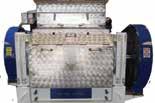

“Having a plethora of genetic and carcass data available to our customers is really important. It’s the expectation of the seedstock industry to back cattle with numbers and breed associations are starting to accept electronic identification as a form of permanent identification,” he added. “With one scan, we can collect and send data to a third party, like the American Angus Association, and I don’t worry as much about making a mistake as I did with recording numbers on paper and then typing them into the
computer system. As producers, it’s important that we harness the power of electronic identification and traceability systems to our advantage and to protect the industry.”

Schiefelbein said the Minnesota Board of Animal Health is also moving forward with providing health certificates electronically, which adds to the potential benefits of implementing an EID system. Working with states to implement a system where animal health certificates are transmitted electronically is important, and Schiefelbein has experienced its effectiveness first-hand.
“Bulls are sold to multiple states through our sale, and they all need health papers to leave the state. The Minnesota Board of Health sends me an electronic health paper as a PDF, and I send it on to the new owner of the bull. It’s very simple and you don’t have to worry about losing the paper,” he said.
Mark McCully, CEO of the American Angus Association (AAA), said EID is a means for traceability and a helpful management tool.



NATIONAL CATTLEMEN 15 SPRING DIRECTIONS 2023
L ore
“Accurate animal identification and data collection is paramount to the seedstock business,” McCully said. “So much of the value in the purebred business is based on genetic predictions and EPDs, so getting that data assigned to the correct animal and into the association’s system is important. We then had to ask ourselves how we can make it easier for producers to collect information when buyers of Angus genetics continue to demand more and more data.”
Just recently, the AAA board chose to accept EID as a form of permanent identification. McCully noted that it’s a big step for the association and acknowledged that the technology has come a long way with many members starting to use EID.
“There’s the big picture scenario in the traceability conversation with steps we can take now to help contain a potential foreign animal disease outbreak and maintain market access. But then there’s also the management side of EID, it helps improve accuracy of data collection and is a time and labor savings,” McCully said. “Nearly every conversation I have with one of our breeders includes the inability to find labor, and as we continue to put more of the value determination in seedstock on data, which takes time, we have to provide tools that make practices more efficient.”
Electronic data collection also benefits the feedlot sector, especially larger yards that receive cattle from across the country. According to Tom Portillo, DVM, EID systems are beneficial for quickly tracking health and performance amongst groups of cattle.
“Cattle from different point sources often end up getting mixed in large feedyards to fit pen density. This means individual source data gets lost. So, if you have a pen of 200 head from four sources and a morbidity rate of 10%, a quick scan of an electronic tag makes it simple to track where that sickness came from and treat it in multiple pens more effectively. Without an electronic system, you’re left with a lot more guesswork,” Portillo said.
He added that high frequency technologies are getting better at reading from a distance, making it easier to reconcile individual lots as they’re moving through the feedyard. And, of course, the reduction in human error when collecting and entering performance data is a plus.
Mary Ann Kniebel, co-owner of Kniebel Cattle Company in Kansas, describes her operation as conception to consumption with cattle born and raised on the ranch and marketed through U.S. Premium Beef.

“The ranch is 145 years old, but we experienced a lot of growth in the 1990s. The survivability of a small operation means you have to work with something bigger than yourself and that’s why we were part of the founding of U.S. Premium Beef. The original intent was to have market access at the top. This ended up changing the course of our operation through the need to analyze genetics and have access to data,” she said.
Kniebel noted that you can’t manage what you can’t measure and thinks producers need to be open to technology and systems that allow them to advance their use of data. While ease of data collection and transmission is important to Kniebel, there are three things about the industry moving toward an electronic traceability system that make it a no-brainer for her.
“When it comes down to it, every operation has to make the decision about what’s best for them, but I don’t think any of us can ignore what devasting effects a disease outbreak would cause for us as individuals and the entire industry,” she said. “Robust trade is a huge addition to the bottom line, containment and regionalization of a disease outbreak is crucial, and having the peace of mind that you’re prepared for a potential crisis is important. There is power in planning, and I want to know that I’m as prepared as possible to address a potential problem.”
16 NATIONAL CATTLEMEN SPRING DIRECTIONS 2023
Attracting the Best Labor
An Experiment in Recruiting New Hires
By Russell Plaschka, Ph.D. Kansas Department of Agriculture

Wanted: People for hazardous journey, small wages, bitter cold, long months of complete darkness, constant danger, safe return doubtful, honor and recognition in case of success. This is from a wanted ad in the early 1800s but could just as easily be for an opening during calving season in the northern plains. Sounds like a great opportunity, right? Unfortunately, today’s job seekers may not understand what exactly is required of them in an agricultural career, and all industries are struggling to find employees. I know of no single farm or ranch that isn’t looking for good help, but even if they have all their spots filled and the right person came along, they would make a spot for them.
What Are We Up Against?
There may be a whole host of reasons why it is more difficult to find and retain good employees. COVID-19 opened the world to remote work, a new generation making money generating online content, job seekers being more selective on the type of jobs, or there are simply more jobs than people available. As an industry, agriculture is up against more career options than ever before. AgCareers.com in partnership with the National FFA Organization identified more than 250, and counting, different ag related careers. For those young people looking at agriculture, the career path is more than a fork in the road; it is a series of on and off ramps with a highway system that Google Maps may not be able to navigate.
On average for the rural counties across the country, the unemployment rate is roughly 2%-3%. A variety of sources from academia to the Bureau of Labor estimate the unemployment rate for full employment to be anywhere from 4%-6%. Using some rough math from various parts of the country, this means for every one job opening there is 0.8 people available to take that
job; it’s a job seekers paradise, if they are looking for employment.
A New Workforce
One of the biggest issues I have noticed in attracting the workforce is that many producers still believe there are “ag kids” out there. Well, to be fair, they are out there but they are very few. If they are out there, they typically have their own family operations to go back to. This means those young people interested in agriculture may not come with the skillsets you need them to have. So, what does this mean? It means we may have to re-think how these workers are recruited, trained, and retained. Unfortunately, we can’t just call up the local ag teacher or county agent and ask if they can recommend a few strong bodies to help work cattle, feed for the weekend, or help over the summer. It does mean that we can make the same calls and ask for a few that are interested in learning about your type of operation, come experience a bit of “day in the life,” and then make a mutual decision if the job is a fit for them and you. Though we have many students in FFA/ag education, 4-H, and enrolling in post-secondary agriculture schools, it does not mean they have the working experience to step onto an operation and know how things work.
Millennials and Generation Z make up most of the workforce you are trying to recruit. A recent article in the Entrepreneur stated that the Generation Z group are changing careers at a rate 134% more than in 2019. They are looking for opportunities to enter the workforce, learn new skills and advance. In agriculture’s case, there may not be much room for advancement, but we can work to ensure they take on more responsibility or perhaps they can take part in decision making for production practices. Millennials and Generation Z also want to be a part of something. We talk about our operations as being a way of life, part of something bigger and special. How are you communicating that message to your employees? Or are you communicating it at all?
NATIONAL CATTLEMEN 17 SPRING DIRECTIONS 2023
Along with your communication, what about your other employees? Roughly 56% of the upper-level management positions are held by the generation called Boomers, and as you are well aware, they are retiring now. How are you transitioning their institutional knowledge to the next manager or even entry level employees? According to a recent survey, 57% say they have shared half or less of the needed knowledge and 21% have shared none of their knowledge to the junior employee. You have invested years in these employees and relied on their gained knowledge to help you be successful in your operation. Attention should be given on how to pry some of the knowledge back out to pass onto new employees. By simply overlapping employment with the new person and having the retiree mentor the new employee, you might just get some of that institutional knowledge passed on, which can save you on-boarding time.
Is There a Silver Bullet?
First off, the bad news, there is no one solution for all operations. Each one of you have a different challenge, be it location, size/ scope of operation, number of employees or even mixing nonfamily with family employees. Most of you have already had to raise rates of pay, provide incentives/benefits, hire foreign labor through H2A programs and, hopefully, changed recruiting practices. What I lay out next is just one possibility in recruiting young people before they decide what career they will pursue, either right out of high school or after post-secondary education.
The Immersion Experience
Just as it says in the name, this is an immersion into your operation, cow-calf, backgrounder, starter yard, grazing, feedyard, animal health or a combination of many including grain and

forage production. This idea grew from a conversation with one of our interns about the types of careers that can be found within agriculture and the lack of understanding of what goes on out of eyesight from the highway. If you think about it, would the average person, even a person involved in agriculture, truly understand what the career opportunities are in your operation just by driving by? My guess would be no.
We started by selecting a willing stakeholder that needed to connect to the local youth. In this case we highlighted a feedyard in Kansas that wanted to recruit more local talent to their various operations. Working with their management team, we selected five local high schools to invite and connected with the local ag teacher or counselor to select five or six students from each school who had an interest in learning more about the careers in the feeding industry. Next, the feedyard reached out to their industry partners to assist in the rotations. Those partners were the ones selling/servicing their feed trucks, heavy equipment, feeding and animal health tracking software, and their animal health providers. By using these partners, they were able to limit the number of employees that would have had to leave their daily duties. This also provided additional experiences for the students to see other career opportunities that supported the feeding industry.
The rotations were as follows:
• Feed truck - Students were instructed on how to operate the feed truck and, in an empty bunker silo, they attempted to lay out a consistent line of silage for 100 ft. They also saw the technology used in the cab that assists the driver in accurately delivering feed.
18 NATIONAL CATTLEMEN SPRING DIRECTIONS 2023
• Equipment - Students operated a pay-loader in the bunker by driving up to a pre-made pile of silage, filled the bucket, backed up, and dumped it. Also during this rotation, students got to interact with the technicians who service the equipment.
• Feed mill - A recipe had been pre-made and all the ingredients were laid out in buckets in the mill. Students had to follow the recipe, sample, weigh, mix and test the ration to ensure the recipe had been followed. The nutritionist guided the students through this while explaining the importance of each ingredient for the gain needed for the cattle.
• Animal health - Pharmaceutical reps and veterinarians demonstrated and assisted students on mixing and administering vaccines. Students were chute-side as an animal health crew evaluated and treated the pulled cattle.
• Marketing management - Participants matched their true evaluation skills against the marketing manager. Students listened as he evaluated a pen of cattle, and then they evaluated the next pen. They compared notes as he explained estimating weights, percent choice, and how many days those not ready would need to stay on feed.
• Office - The software management service technicians were on hand to walk students through the feed management and animal health management software as well as talked about careers on that side of the industry. Students were able to see and work with a training software that showed just how the management could adjust feed rations, pen feeding order, and track animal health protocols. During this rotation students heard from the manger about the other careers such as commodity procurement, human resources and accounting.
The great thing about this activity was that it could be customized for any operation and limited only by your imagination, as long as we considered the risk involved with working with youth. Work with your local high schools, depending on your location you may only have one school and that is fine. Keep the numbers around 25-30 students so the groups they are broken into are small — three to five maximum. The point is to provide each student an opportunity to do the task demonstrated to them. The key here is this is not just a field trip, this is a “get your hands dirty” experience.

Feedback from the students, businesses and industry partners have been overwhelmingly positive. Each time these activities were done the businesses have reported that they received inquiries from students on internships as well as job opportunities. This is also true for those industry partners helping with the events.
You all know the challenges in attracting new employees; we have low unemployment, a changing demographic in the workforce that is available, a change in culture within that demographic, and there are more opportunities in agriculture than ever before. How you set yourself apart from other opportunities is key to attracting the right person for the right job. The immersion activity is just one way to get to young people early and show them the great opportunities you have right in their communities. Think about all the young people in your community; they all will be looking at career opportunities. If you are not in their ear talking about the jobs you have, your competition will be.
Sure, it’s called Purina® Wind and Rain® Cattle Mineral. But that might just be like selling a banana for the peel.
With palatability and bioavailability as e ective as its weatherability, calling it just one thing isn’t enough. With these abilities combined, your herd eats what they need and not through your profits.

NATIONAL CATTLEMEN 19 SPRING DIRECTIONS 2023
Honestly, we might have named the product
wrong.
Find the right Wind and Rain® for your herd at purinamills.com ©2023 Purina Animal Nutrition LLC. All rights reserved.
New Technologies for Pregnancy Determination
How to Use Them to Better Manage Your Herd
 By George Perry, Ph.D. Texas A&M University
By George Perry, Ph.D. Texas A&M University
As feed costs increase, the expense to maintain non-pregnant cows through the winter also increases, and these expenses must be paid for by the calves that are born and weaned the following year. For example, in a herd of 200 cows and winter costs of $500 per cow; 12 non-pregnant cows kept through the winter would cost an additional $6,000. This would increase the cost for each of the 188 calves born by $31.92. Thus, at minimum, pregnancy status should be determined on all cows following the breeding season.
Pregnancy diagnosis has traditionally been performed by a local veterinarian using rectal palpation. However, many advances in pregnancy determination have occurred over the last few decades, and other methods to determine pregnancy include transrectal ultrasonography and blood sampling. Each technique has its benefits and its limitations; therefore, each method should be evaluated based on your operation and your access to each technology.
Methods Of Pregnancy Determination
Rectal palpation
Rectal palpation (the time-honored method) has been used by veterinarians since the early 1900s.14 A skilled veterinarian can determine a pregnancy between 30 and 35 days after conception2 and can accurately estimate the age of the fetus.8 This method is performed by manually feeling through the rectal wall for the amniotic vesicle, fetus, placentomes, or a “membrane slip.” This method gives immediate results, but accuracy is dependent on the skill of the veterinarian. There can be incidences of embryonic loss due to rectal palpation, but these losses vary tremendously between technicians.1
Transrectal Ultrasonography
Transrectal ultrasonography technology has become more routine as the portability and durability of equipment has increased. Similar to rectal palpation, a probe is inserted into the rectum and placed over the uterus. The probe emits sound waves that bounce back differently depending on the density of the object (fluid appears black and bone appears white). A skilled clinician can detect a pregnancy as early as 27 days after conception.3,5 As with rectal palpation, results are known immediately. Furthermore, a skilled clinician who is properly trained can determine age, viability (presence of a heartbeat), and gender of the fetus.5,10 Similar to rectal palpation, accuracy is dependent on the skill of the clinician, and there are additional upfront costs of the equipment.
Chemical Pregnancy Determination
Recognition of the fetus by the dam occurs around day 15 to 16 after insemination12 through a chemical signal, but this chemical signal is not detectable in the circulating blood. However, when the embryo begins to attach to the uterus, binucleated cells in the placenta migrate and fuse with the epithelial cells that line the uterus.15 These binucleated cells synthesize proteins that are released into the maternal blood supply. One of the protein types synthesized is pregnancy-associated glycoproteins (PAG). These PAG proteins can be detected in maternal circulation beginning approximately 25 days after conception.7 Multiple laboratory and one chute-side test is available to determine pregnancy status based on presence of PAGs in maternal circulation. Unlike the previous methods (rectal palpation and transrectal ultrasonography) where a skilled clinician is required, a chemical test only requires a blood sample be collected.
One question that is often asked is how accurate are chemical pregnancy detection methods, and why do they sometimes
20 NATIONAL CATTLEMEN SPRING DIRECTIONS 2023
KEY POINTS

• Methods for determining pregnancy status exist and include; rectal palpation, transrectal ultrasonography, blood sampling, and observation for return to estrus.
• Rectal palpation and transrectal ultrasonography give immediate results, but the accuracy is dependent on the skill of the veterinarian.
differ from palpation and/or ultrasonography? To answer the first part of the question, commercially available assays are very accurate at detecting PAGs in circulation above a specific threshold. The bigger question is why can they differ from palpation and/or ultrasonography? As has been mentioned previously, accuracy of palpation and/or ultrasonography is based on the skill of the technician. A large study comparing different commercially available PAG tests to transrectal ultrasonography performed on the same day are present in Table 1.9. As reported, high levels of agreement (> 90%) occurred between all tests, but why the disagreements? Ultrasonography is not perfect, and embryos can be missed. Thus, ultrasonography can call an animal open when in fact she is pregnant, and PAG assays can detect PAGs and call her pregnant. In addition, PAGs have a long half-life, and thus can be detected in circulation after an embryo dies. If an embryo dies and is not visualized by ultrasonography, a PAG assay can still call the animal pregnant for a period of time.6 False Negatives occur when PAG concentrations are not in sufficient quantities to call an animal pregnant, but an embryo or embryonic tissue is visualized on the ultrasound. Recent research has indicated that animals with decreased circulating concentrations of PAGs on day 30 have increased incidence of embryonic mortality.13 Variation among PAG assays occur in how they are read (human error) and which PAG or PAGs are being detected. In short, no test is perfect. When we compare imperfect tests, there will be discrepancies between them, but when comparing commercially available PAG assays to a welltrained technician, agreement between them is very high.


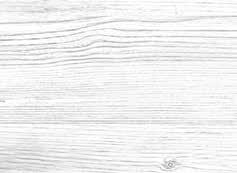






Utilizing Pregnancy Status To Better Manage Your Herd
• Chemical or blood tests require the ability to collect a blood sample. (303) 539-9300
Everyone is aware of the traditional reasons for determining which cows are pregnant at the end of the breeding season: timely culling of open cows, selling animals that conceived late in the breeding season, decreasing winter feed costs, etc. However, when we think about pregnancy determination as a reproductive technology and how it can impact overall herd management, there are several reasons to not only determine which cows are pregnant but also when they conceived during the breeding season.
There are definite advantages to grouping cows based on expected calving date, such as the ability to focus time and labor,

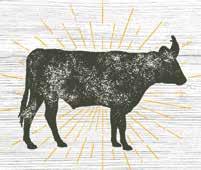
NATIONAL CATTLEMEN 21 SPRING DIRECTIONS 2023
Agreement Between Pregnancy Detection Tests
Alertys
and provide adequate shed space during inclement weather. There are also health benefits that can be realized when calf ages do not vary greatly within calving groups. Calves born late are more likely to become exposed to the scour-causing organisms that have been building up from the beginning of the calving season.
When we consider combining pregnancy determination with other reproductive technologies, it allows us to determine how these technologies are performing. With artificial insemination (AI), it can be difficult to determine an AI pregnancy from a natural service pregnancy when pregnancy determination is done following the end of the breeding season. By waiting at least 10 days after the end of the AI program to turn bulls out with the cows, a blood sample could be collected at day 30 to determine which animals conceived to AI.11 These results can be made available to a veterinarian for confirmation at the final pregnancy diagnosis following the end of the breeding season. In addition, they can be used to verify if any embryonic loss occurred between the first and final pregnancy diagnosis. Determining pregnancy status early in the breeding season can be combined with synchronization to resynchronize animals. By initiating a synchronization protocol on day 21, after an initial AI, pregnancy status can be determined on day 28 (before a Prostaglandin f2α injection is given) and two rounds of fixed-time AI can be performed. This method increased the percentage of the herd that conceived to AI by 15%.4
In Conclusion
There are now several options available for pregnancy determination in cattle, the newest of which are chemical pregnancy tests. Chemical tests allow for pregnancy diagnosis when a skilled clinician is not available and can now be performed chute-side. Whichever method of pregnancy determination is used, the knowledge gained by knowing which cows are pregnant at the end of the breeding season and, if possible, when they conceived during the breeding season allows for increased management of your herd through culling of non-pregnant animals, grouping by calving date, and increasing the efficiency of your operation.

Sources
1. Abbitt B, et al., 1978. J Am Vet Med Assoc 173 973-977.
2. Ball L: Pregnancy diagnosis in the cow. In Morrow DA (ed): Current therapy in theriogenology, p. 229, Philadelphia, WB Saunders CO, 1980.
3. Beal WE, et al., 1992. J Anim Sci 70 924-929.
4. Epperson KM, et al., 2020. Theriogenology. 157:121-129.
5. Fricke PM 2002 J Dairy Sci 85 1918-1926.
6. Giordano JO, et l., 2012 Journal of Dairy Science 95:683-697.
7. Green JA, et al., 2005. Theriogenology 63:1481-1503.
8. Kasimanickam et al., 2010 Clinical Theriogenology 2(4):2010
9. Kline A. Changes in Pregnancy -associated Glycoproteins Associated with Fetal Age, Postpartum Interval and Evaluation of a Chute-side Lateral Flow Assay. Electronic Theses and Dissertations 2021.
10. Lamb GC, et al., 2005 Proceedings, Applied Reproductive Strategies in Beef Cattle. Reno, Nev.
11. Northrop EJ, et al., 2019. PLoS One. 2019; 14(1): e0211179.
12. Peters, A. R. 1996. Anim. Breeding Abstr. 64:587-598.
13. Reese ST, et al., Anim Reprod Sci 2020;212:106251.
14.Roberts SJ. 1986. Examinations for pregnancy. In Veterinary obstetrics and genital diseases (Theriogenology), 3rd ed, p 14. Woodstock VT.
15. Spencer TE, et al., 2007 Soc. Reprod. Fertil. Suppl. 64:379-396.
22 NATIONAL CATTLEMEN SPRING DIRECTIONS 2023
Table 1.9
Test Agreement, % False Positive, % 5.61 6.46 5.91 3.56 1.31 1.80 2.00 2.80 1.48 1.37 2.46 0.83 2,744 1,533 2,436 1,460 2,360 1,443 False Negative, % Samples, n
Pregnancy
Ultrasound:
Visual Pregnancy Test Ultrasound:
Pregnancy Test Rapid Visual Pregnancy Test: Alertys OnFarm Pregnancy Test Ruminant Pregnancy Test: Alertys OnFarm Pregnancy Test Rapid Visual Pregnancy Test: Ruminant Pregnancy Test 92.38 90.73 92.61 95.07 96.22 97.36
Ultrasound:
OnFarm
Test
Rapid
Ruminant
NationalAwardAnnouncement
April 25, 2023
HIGHLIGHTING STEWARDSHIP & CULTIVATING A SUSTAINABLE LEGACY
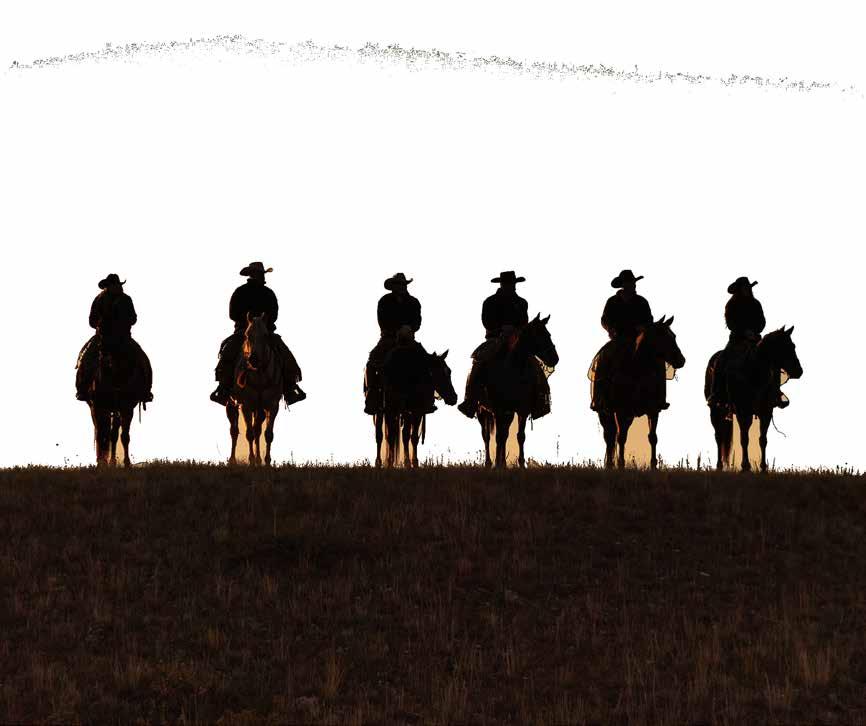
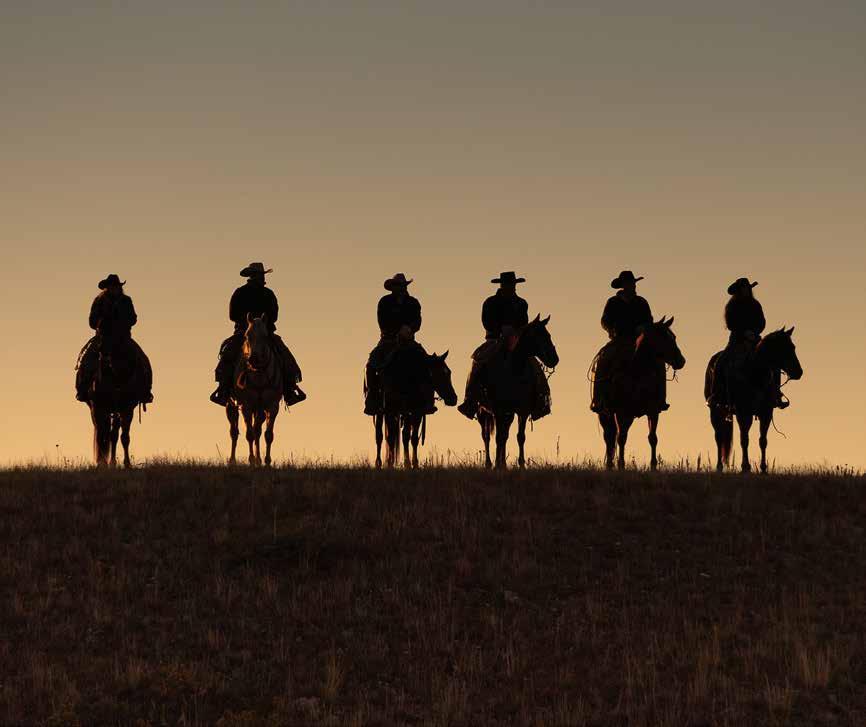
Now in its 32nd year, the Environmental Stewardship Award Program annually recognizes the outstanding stewardship practices and conservation achievements of cattle producers from across the nation. This April, we’ll be honoring our seven regional winners in Washington, D.C., and announcing the 2022 national recipient of the Environmental Stewardship Award. For more information, visit environmentalstewardship.org
Sponsored by
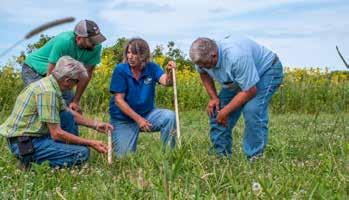


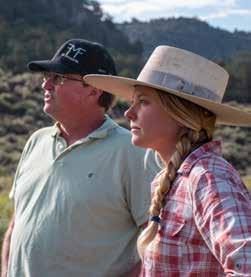
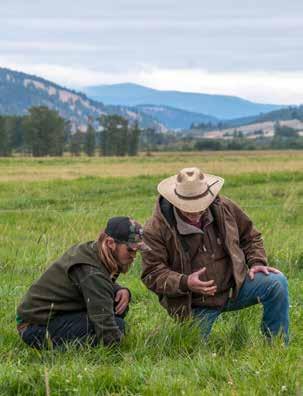


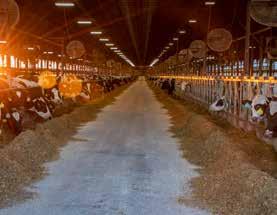
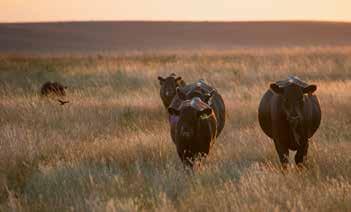
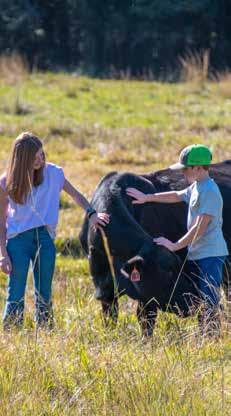

Conservation Profles

2022 REGIONAL WINNERS
About the Award
The Environmental Stewardship Award Program (ESAP) was established in 1991 by the National Cattlemen’s Association (now NCBA), and is made possible by the generous sponsorship of the USDA Natural Resources Conservation Service (NRCS), Corteva Agriscience™, McDonald’s, and the U.S. Fish and Wildlife Service. Now in its 32nd year, the Environmental Stewardship Award Program annually recognizes the outstanding stewardship practices and conservation achievements of cattle producers from across the nation. Regional and national award winners are commended for their commitment to protecting the environment and improving fish and wildlife habitats, while also operating profitable cattle operations. Recipients of this award share the desire to leave the land in better shape for future generations — a desire expressed across the beef supply chain. In addition to highlighting stewardship, this program also provides fellow cattle producers with examples and ideas that may be useful on their own farm and ranch operations.
Environmental Stewardship Award winners are selected every year by the Environmental Stewardship Award Selection Committee, which is made up of representatives from universities, conservation organizations, cattle producers and federal and state agencies. This committee considers the management of water, wildlife, vegetation, air and soil, along with leadership abilities and the sustainability of the business as a whole.
Nominees compete for one of seven regional awards based on state of residency. From the cohort of regional winners, one cattle operation is selected by the committee as the national Environmental Stewardship Award winner. Nominations may be submitted by any organization, group or individual on behalf of a U.S. cattle producer. In the past, nominations have been submitted by a diverse mix of organizations, including The Nature Conservancy, NRCS, Society for Range Management, state games and parks services, state extension services, universities, wildlife organizations and all types of livestock groups. For more information, or to nominate your neighbor, visit www.environmentalstewardship.org
Thank you sponsors
FOR YOUR GENEROUS SUPPORT
NATIONAL CATTLEMEN 25 SPRING DIRECTIONS 2023
Region I
Lamb Farms, Inc. from Oakfield, New York, is a family dairy whose commitment to reducing waste led them to becoming the region I ESAP winner.
“Lamb Farms is an exemplary family dairy operation that is committed to environmental conservation and sustainability,” said John Dickinson, Northeast Dairy Producers Association chair. “Through early adoption of sustainable practices and technology and their participation in ongoing research, Lamb Farms demonstrates their commitment to continuous improvement and providing opportunities for the next generation of farmers.”
The Lamb and Veazey families farm more than 12,000 acres over three locations as part of their dairy operation. Located within three watersheds, Lamb Farms, Inc. has made it a priority to operate their dairy with environmental practices at the forefront of their management decisions. By implementing strip tilling practices, the farm has dramatically reduced ground disturbance, allowing earthworms, fungi and other soil organisms to thrive, improving the farm’s soil health. The farm also uses a cover crop program which helps reduce the need for fertilizers and herbicides, prevents erosion and protects water quality. Two anaerobic digestors also capture methane and generate energy for electricity and clean natural gas.
“Our goals are to produce the highest standard of milk quality in an environmentally and cow-friendly manner, while building a strong employee/team setting and creating a positive image in our community,” said Jonathan Lamb with Lamb Farms, Inc. “Three generations and 13 family members use their unique areas of expertise to help us achieve these goals.”
This family farm strives to improve their efficiency and stewardship efforts every year. They know that if they are not improving, they won’t be able to farm the land that sustains them. Lamb Farms, Inc. thinks outside of the box by using materials that some people might see as waste and repurpose it to feed their community.
CARTER CATTLE COMPANY, LLC

Region II
Pintlala, Alabama
“Cattle and a clean environment go hand in hand,” said Will Carter of Carter Cattle Company, LLC.
This Alabama farm has been in Carter’s family since the 1820s, when they settled in the area, and they are taking every action to ensure it can be around for another 100 years. Will and Monnie Carol Carter's children are the seventh generation on the land.
“The Carter family is the embodiment of farmers and ranchers being the original environmental stewards,” said Michelle F. Elmore, Alabama Beef Cattle Improvement Association executive secretary. “The Carters strive to expand their education, apply hard work and new innovations to leave a more sustainable farm to future generations and provide a safe, healthy food supply.”
Sustainability began as a lifestyle more than a practice seven generations ago when the farm was established. The Carters make management decisions with the future in mind, utilizing rotational grazing for their forage-based feeding program. Rotational grazing has been vital to improving the overall health of the farm ecosystem, soil health, forage base, watershed, livestock and wildlife. Through conservation incentives offered under the Watershed Project and Environmental Quality Incentives Program (EQIP), the Carters installed 2,000 feet of water lines to two new water troughs, protected 1,250 square feet of heavy use areas and built 1,300 feet of fence to exclude cattle from Pintlala Creek. These efforts help the Carters utilize the land in the most effective way for their cow herd while protecting natural resources. In addition, being good stewards doesn’t stop at the farm gate, as both Will and Monnie Carol are veterinarians who care for other animals in their community.
“We are in the cattle business, but we are in the grass business first,” said Will. “Our job is to manage the grass and allocate it to the cattle that then take the resource and produce something of greater value.”
Will and Monnie Carol are thankful that their son and daughter are eager and active with raising the cattle, and they take an interest in the practices their parents use to nurture the land.
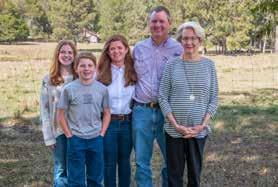
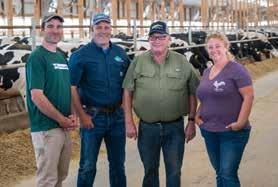
LAMB FARMS, INC.
Oakfield, New York
26 NATIONAL CATTLEMEN SPRING DIRECTIONS 2023
Region III
HUTH POLLED HEREFORDS; S&H LIVESTOCK ENTERPRISES, LLC
Oakfield, Wisconsin
“Jerry and Josh are exceptional examples of a beef cattle operation focusing on long-term sustainability,” said Brady Zuck, Wisconsin Cattlemen’s Association president. “They have demonstrated an approach for other operations to emulate regarding sustainability of operations, transitioning ownership and securing the viability of the cattle operation, and they have focused on managing the land with grazing cattle to improve the environment.”

Over the past 60 years, Jerry Huth of Huth Polled Herefords has established a reputation for genetics and cattle which are productive and profitable in their environments. Josh Scharf first joined the operation as an employee then transitioned into ownership through S&H Livestock Enterprises. Josh was working on the farm even before he graduated high school. Together, their expanded enterprise required more pasture, leading the team to pursue utilizing 130 acres of statemanaged public land that borders the farm. The public-private partnership to graze state land has been beneficial to the sustainability and expansion of the operation while also providing environmental and habitat benefits to public land. Jerry and Josh ensure pastures maintain good soil health by effectively managing stocking rates and resting pastures. These practices produce nutritious, dense and high-energy vegetation for cattle and reduce erosion and water runoff.
“Our main goal is to maintain and improve the quality of the environment for future generations while producing a quality, profitable product,” said Huth. “We partner with various organizations to continuously improve our farm and enhance our sustainability efforts.”

Located near one of the largest marsh systems in the country, the Horicon National Wildlife Refuge, Jerry and Josh prioritize preventing water runoff and erosion by using grass buffer strips. When they began grazing cattle on public lands, they saw an improvement in the management of invasive species and a decrease in chemicals to control weeds. Now, both wildlife and cattle flourish on the land.
Region IV
“It makes perfect sense to run cattle here; it’s not going to make a better golf course. It’s not going to be a better shopping center. This is what this land was made for,” said David Crow with Parks Ranch.
PARKS RANCH
Goliad County, Texas
Raised in Corpus Christi, Texas, David started his career with his family’s trucking and concrete business, but his passion for the cattle industry drove him to pursue ranching. The first-generation cattle producer bought his first cattle in 1978 and purchased the 4,200-acre Parks Ranch in 2000. David and his son, Matt, have a strong history of managing coastal prairie by consistently implementing conservation management techniques including winter and summer prescribed burns, brush management, and rotational grazing plans. These techniques have resulted in a greater density and diversity of native grasses and forbs, which in turn support a greater diversity of native wildlife, including whitetailed deer and bobwhite quail. The Crows continue to conduct quail and deer surveys as a tool to measure the success of their efforts, maintain healthy populations, inform their habitat management practices, and achieve their goals of maintaining a healthy coastal prairie that supports a diverse array of species.
“David and Matt Crow are exemplary stewards of the landscape and, in the community, a model for cattlemen everywhere to learn from and to follow to advance the knowledge of resource stewardship throughout our industry,” said Stephen Diebel, Texas Grazing Land Coalition chairman. “They understand the vital need for resource stewardship not only for their business, but also for the future of the industry.”
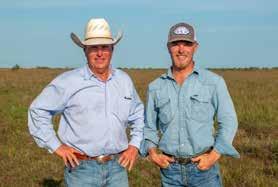
As first and second generation ranchers, David and Matt bring fresh eyes and experience to raising cattle, and they are always open to new ideas and practices that will improve their land and manage the cattle. When they acquired the ranch, they transitioned to rotational grazing and have seen the benefit of resting their grazing lands. This has been especially helpful during times of drought.
“We’re not just about the cattle,” said David. “It’s about the biodiversity of the land, and we’re mindful of it.”
NATIONAL CATTLEMEN 27 SPRING DIRECTIONS 2023
Region V
MANNIX BROTHERS RANCH
Helmville, Montana
Stewardship of the land means seamlessly collaborating with Mother Nature to leave the land better than when it was found. This is the idea that drives the Mannix brothers’ efforts as they raise cattle and tend the environment.
“We’ve never thought of ourselves as the true ‘owners’ of this land,” said David Mannix of Mannix Brothers Ranch. “Instead, we are stewards of the soil, streams, grass, timber and wildlife that belong to this ecosystem. The land is the lifeblood of our community, and we strive to be worthy caretakers of those resources that fall under our management.”
Mannix Brothers Ranch began in 1882, and now the fourth and fifth generations steward the land and livestock. Brothers David, Randy and Brent, along with their wives and children manage the diversified ranching business, which includes a cow-calf program, stocker program, timber entity, direct-to-consumer beef program as well as a restaurant. The brothers credit previous generations for the conservation ideals, work ethic and the continued desire to coexist with wildlife, land and people. The family is focused on improving soil health, and intensive rotational grazing resulted in using less irrigation water and little to no fertilizer, while increasing production on the ground. A band of sheep reduced invasive species such as knapweed and increased plant diversity. The family also partners with numerous resource organizations to complete projects that promote habitat improvements along with promoting agriculture and sustainable ranching practices.
The diversification of their business scope and entities is the result of the brothers’ encouragement of the next generation to participate and bring ideas to grow the ranch. Conversations about the “bigger picture” and future of the ranch are common for Mannix Brothers Ranch. Each generation takes pride in knowing that the following generation will surpass their efforts to coexist with the land.
“The Mannix family has continued the 140-year tradition of the Mannix Brothers Ranch by diversifying their enterprise and making decisions to benefit their family, land and wildlife,” said Jay Bodner, past executive vice president of the Montana Stockgrowers Association.
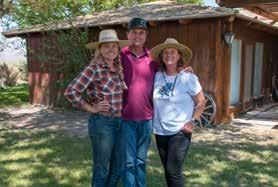
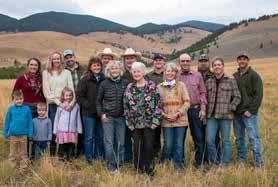
Region VI
FULSTONE RANCHES

Smith, Nevada
“Fulstone Ranches is committed to maintaining their operation for future generations while continually adapting to practice environmental stewardship on their private parcels, leased grounds and public land grazing allotments,” said Marc Jackson, field supervisor for the Pacific Southwest Region Fish and Wildlife Service. “Over the years, each generation has successfully managed the operation which has allowed them to maintain and improve viable rangelands for more than 100 years.”
The Fulstone family has been working the land and raising livestock in Nevada since 1856, and today the ranch is operated by the sixth and seventh generations. Fulstone Ranches works cooperatively with state and federal agencies, universities, and non-profits to bring resources and expertise to solve natural resource challenges. The family works tirelessly fine tuning their operation to improve not only forage quality for livestock, but to also sustain the habitat for wildlife species such as the Bi-State Sage-Grouse. They changed the duration and timing of grazing and removed pinyon-juniper to increase water availability and reduce competition with other desired plant species. The Fulstones are also on the forefront of soil health using worm tea, a natural liquid fertilizer made from worm castings. Water retention has increased as has the quality of feed. “A farm essentially is an ecosystem, one that we manage to make a living off of, but still an ecosystem,” said Emily Fulstone of Fulstone Ranches.
Emily and her father, Steven, ranch commercial cattle on the Nevada-California border. In the summer, they graze cattle on public and private land in the Sierra Nevada mountains. The mountainous, arid climate is not suitable for growing other foods, and the Fulstones are able to produce high-quality protein in this region while also maintaining the ecosystem for other species to succeed.
28 NATIONAL CATTLEMEN SPRING DIRECTIONS 2023
Region VII
CATTLE
Ideal, South Dakota
“The Jorgensen family depicts all aspects of the award ideals while working to improve their operation each year since 1909,” said Cindy Zenk, coordinator of the South Dakota Soil Health Coalition. “The love of cattle and the land, a passion that continues to be handed down through generations, is vividly evident with the fourth generation now managing the operation.”
Soil and animal health are the primary drivers for practices implemented at Jorgensen Land & Cattle. Grazing rotations are developed based on the impacts to soil health, livestock feed demands, and the wildlife benefit created from good cover and plant diversity. Rotational grazing has increased grazing efficiency and improved the productivity of the grassland. The ranch practices diverse crop rotations, integrates livestock grazing on both grassland and cropland, and adds as few external inputs to the cropping or pasture systems as possible. In addition to the cattle operation, The Jorgensens grow 12,000 non-irrigated acres of crops every year using no-till, which has helped improve soil structure and nutrient efficiency.
The Jorgensens have also been experimenting with virtual fencing to improve their rotational grazing precision. With GPS collars, they can select a boundary for their cattle to stay in for any length of time, giving them the ability to target specific areas for grazing while allowing other areas to rest.
Multiple generations own and operate Jorgensen Land & Cattle Partnership, and a key priority for them is to ensure that future generations have the same opportunity. They know this won’t be possible if they don’t maintain and enhance the health of their soils and resources.

“We strive to learn from Mother Nature by studying the native prairies,” said Cody Jorgensen, chief livestock officer at Jorgensen Land & Cattle. “Based on what we learn, we develop cropping rotations that are intended to mimic the ecosystem we live in.”

Whether you are interested in grazing management, animal welfare, community health and well-being, or greenhouse gas reduction, there is no better way to promote sound environmental, economic and social progress than through the innovative work cattle producers do day in and day out.
Now in its 32nd year, the Environmental Stewardship Award Program annually recognizes the outstanding stewardship practices and conservation achievements of cattle producers from across the nation. This April 24-26, we’ll be honoring our seven regional winners in Washington, D.C., and announcing the 2022 national recipient of the Environmental Stewardship Award.
Join us at the Fly-In Legislative Conference by registering at ncba.org/events.
JORGENSEN LAND AND
NATIONAL CATTLEMEN 29 SPRING DIRECTIONS 2023
Weather Outlook
Summer Changes Due to the Loss of La Niña
By Matt Makens Atmospheric Scientist

La Niña is pretty much done. Now onto a neutral pattern before El Niño establishes itself. Depending on your perspective and how each affects your operation, this may come with cheers or jeers. La Niña creates widespread drought for the American West and Plains, yet El Niño can increase drought for the East and far North depending upon the season; I'll have more on that in a moment.
Let's walk through some brief details about where we are and where we are going. As of March, La Niña is gone in the sea surface conditions — the ENSO region warmed quite a lot in the late winter. (The equatorial Pacific Ocean is colder than average during a La Niña and warmer than average in an El Niño.)
However, moments of La Niña continue in the atmosphere, and the atmosphere's response will be delayed for some time, as it takes a while for the atmosphere to couple (work in tandem) with the ocean. In February, the atmosphere was in one of its strongest La Niña moments of the entire event despite the sea below warming out of La Niña. So, just because La Niña is gone from the ocean conditions does not mean the storm pattern around the country can't behave like it is still in La Niña.
We do know the drought this La Niña has spread across the country, and doing away with both will be largely a good thing. The drought monitor, which was released during the same week as La Niña was declared finished in the ocean, shows the ongoing drought footprint across a lot of territory, especially the Central and Southern Plains (see top image):

Although it is safe to say we are turning the corner and the worst of the drought is behind us, the Southern Plains still need a lot of water to catch up. Plus, we will see less drought; not to say no drought. I've attached an image (bottom) of the past three years' moisture deficits to illustrate how far into the hole the La Niña pattern put us.
Hard to argue that the recovery for the central U.S. will take time, considering most of it has had 1-2 feet of water deficits in the past three years.

30 NATIONAL CATTLEMEN SPRING DIRECTIONS 2023
Hard to argue that the recovery for the central U.S. will take time, considering most of it has had 1-2 feet of water deficits in the past three years; dark reds on the map indicate at least 16-inch deficits. Plus, notice how Northern California and Southern Oregon remain in a deep hole despite the wet pattern for some of those areas this winter and early spring.
So, where are we going now that La Niña is on the way out?
The odds increase to more than 60% for El Niño later this year in the ocean conditions, but there is likely a delay in the weather pattern coupling with that ocean condition. That forecast is based on computer simulations and recent trends. To help verify the computerized outlooks, we can find clues supporting El Niño's development from real-world observations.
It is hard to ignore clues like the current precipitation pattern around India and South America; both indicate El Niño should be in place later this year. Lightning data in the tropical Pacific is also helpful as an indication that El Niño will arrive. There's also support for El Niño's development from the atmosphere's behavior near New Zealand and Alaska. I'd like to see some shifts around Hawaii to "lock it in" for an El Niño to take over sooner rather than later.
Bottom line — clues in the weather pattern indicate El Niño establishes itself later this year. Let's not put the cart in front of the horse, though. We still have a period of neutral conditions to get through before ultimately seeing if El Niño takes hold. To be in a neutral pattern, in a way, takes the extreme cases out of the mix; it doesn't focus on specific regions — like how La Niña hits the West with drought. Once we see El Niño taking control, we start to see the extreme cases focus on specific regions again. I'm not implying we will have El Niño fully in place already by this summer. Still, I created the mapping below based on those phases to illustrate how El Niño versus neutral conditions



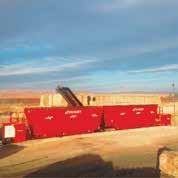



NATIONAL CATTLEMEN 31 SPRING DIRECTIONS 2023
impacts summer precipitation. That’s a lot more potential for water for many folks if El Niño can develop quickly. And I should mention that several oscillations beyond El Niño and La Niña impact our weather, but for the sake of illustration, I think you get my point on the impact El Niño can bring.

Now that we are turning the corner on the drought-plagued weather pattern of the past several years, there is a lot to be watching. As I see it, the data indicates a neutral weather pattern for this summer with El Niño gaining strength, which will lean warm and dry for some, but not nearly as dry as the past couple of summers. The regional-specific outlook for this summer is as follows.
June through August 2023

We will have just the hint of La Niña’s remaining memory left in the weather pattern, although it is a neutral summer to begin and with increasing nudges toward an El Niño pattern to finish.
Northwest: Any remaining influence from La Niña’s weather pattern, plus the cooler water along the coast, will keep the area drier than average for the season; driest the farther north. A stronger El Niño will help deliver more precipitation and cooler temperatures. Temperatures will break even for Washington and Oregon, but odds favor a warmer-than-normal summer for Idaho.
West: After an incredibly wet winter and periods of more moisture in spring, the summer will be less extreme; near-normal rainfall is expected except for northern Nevada. Temperatures will be average for northern and central California but warmer than typical for the Central Valley and Southern California, as well as most of Nevada.
Southwest: The ultimate strength of El Niño will influence the monsoon throughout the summer. A normal monsoon is expected for Arizona and New Mexico but slightly drier-thanaverage parts of Northwestern Colorado and Northeastern Utah. Temperatures will be warmer than average.
Northern Rockies: A drier than average summer, but only marginally for the region. The driest will be far northern/northwestern Montana; meanwhile, the Plains have equal chances and will likely break even. Temperatures will be warmer than average for the driest areas, near normal on the Plains. Should El Niño kick in, the mountainous areas will be cooler than average with quite a bit more moisture.

South: Soil moisture will continue a slow recovery from southwestern Kansas to western Texas. Precipitation chances are near normal, yet temperatures warmer than average will increase the evaporation on those already dry soils. Eastern parts of the region will be wetter than normal, with warmer-than-normal temperatures.
Upper Midwest: Some wetness will favor Michigan; otherwise, a breakeven summer with near-normal precipitation and temperatures and some pockets of drought possible in Iowa. Should El Niño develop more quickly, most of the region will end up drier than average.
Ohio Valley: The eastern Corn Belt will have moisture and the Ohio and Tennessee Valleys; elsewhere, expect near-normal precipitation. Temperatures will be near normal to slightly warmer than average through August.
Southeast: Areas of surplus moisture decrease farther south. Conversely, temperatures will be warmer than average the farther south, too. Should El Niño increase quickly, it’ll act to dry things out, and the season will end normal to drier than average.
Northeast: Unless El Niño kicks in, a normal to wetter-thanaverage summer with warm temperatures is expected. Drier conditions will result if we see a more rapid transition.
32 NATIONAL CATTLEMEN SPRING DIRECTIONS 2023
www.WSRins.com/ranch-protection/ CA License #0B48084


Visit JohnDeere.com/6R or contact your John Deere dealer to learn more. John Deere 6R Premium Performance Get the power, reliability and efficiency you need with John Deere 6R Utility Tractors. Improve productivity with the power-to-weight ratio and an extra power boost when you need it. Improve engine cooling by blowing out chaff in the hay field with the reversible fan. Mixing feed, weighing bales and loading goods have never been easier, thanks to loader technologies on the 6Rs. Ride in style in the top-of-the-line, comfortable cab with better visibility, ergonomic controls and a smooth ride in the John Deere 6R.
Genetics and Sustainability
The Relationship Between Genetics and Beef Industry Longevity
A long-lasting beef industry means shared value among environmental stewardship, economic viability and social responsibility — NCBA’s three pillars of sustainability. This combination of factors not only drives the United States’ contributions to meeting the global demand for beef but also the ability for cattle producers to continue operating.
As we often hear, U.S. beef production is more efficient than ever before. We are able to produce more pounds of beef with fewer head of cattle and fewer resources. Undoubtedly, this is the result of a few things: developments in animal nutrition, modified production practices and the cattle producer’s commitment to continuous improvement. Often left out of consideration, however, is the contribution of genetic advancements.
“We talk a lot about sustainability. It’s become a little bit of a buzzword, but I think it is central to everything we do and what we’ve been doing as an industry for a really long time,” said Troy Rowan, Ph.D., assistant professor and state extension specialist at the University of Tennessee Institute of Agriculture Genomics Center for the Advancement of Agriculture.1
Despite cattle producers’ work as dedicated stewards of the land and their livestock, the beef industry is experiencing a shift in demand. As Rowan’s research states, the changes the beef industry is undergoing are driven by “economic, social and environmental pressures to increase its efficiency.2”
This brings us back to NCBA’s three pillars of sustainability. So, the question then becomes what can we start today to help address the pressure to increase efficiency as an industry? The simple answer is genetic improvements.
How Do Genetics Relate to Sustainability?
Beef cattle are situated in a very unique ecological niche. Rowan draws a connection between the beef cow’s ability to not only provide a service to the environment but to humankind as well. This combination results in sustainable food production — an increasingly prevalent topic and one that genetics can contribute to.
“Genetics play a critical role in building a sustainable food supply, which is crucial to addressing the world’s protein needs,” said Matthew Cleveland, Ph.D., senior director, Global Beef Sustainability and Product Development for ABS Global.
Of course, increasing the efficiency of U.S. beef production through genetics is not something that happens overnight. It takes time and resources to create the right beef genetics for a more viable food supply.
Genetics do have the ability of making positive change on a global scale. However, they also can improve the overall sustainability of an individual cattle operation, and as Cleveland said, “True sustainability starts with better breeding.”
Continued on page 36

34 NATIONAL CATTLEMEN SPRING DIRECTIONS 2023
Accuracy extended to your cattle counts

Accu-Trac Flight allows users to be certain before they ship. Providing 99.997% accurate shipping pen counts in as little as 45 seconds.
Think you can beat flight? Take the Accu-Trac Flight challenge today!
Continued from page 34
Aside from the ability for genetic improvements to impact the efficiency of global food production, it is important to step back and remind ourselves of the practicality of the beef business — we have to be profitable.
“The goal is to aid each business sector in optimizing the blend of biology and economics,” said Chip Kemp, director of the American Simmental Association and International Genetic Solutions commercial and industry operations. “That provides confidence to the consumer that resources are used responsibly. It offers grocers and purveyors a meaningful metric to honestly market with. It empowers packers and feeders to choose cattle that are tailored and designed to meet their profit motives while appealing to their customers’ needs. And uniquely, this approach positions the farmer and rancher for unparalleled influence and operational success.”
Aside from the ability for genetic improvements to impact the efficiency of global food production, it is important to step back and remind ourselves of the practicality of the beef business — we have to be profitable.



“The goal is to aid each business sector in optimizing the blend of biology and economics,” said Chip Kemp, director of the American Simmental Association and International Genetic Solutions commercial and industry operations. “That provides confidence to the consumer that resources are used responsibly. It offers grocers and purveyors a meaningful metric to honestly market with. It empowers packers and feeders to choose cattle that are engineered and designed to meet their profit motives while appealing to their customers’ needs. And uniquely, this approach positions the farmer and rancher for unparalleled influence and operational success.”

Continued on page 38
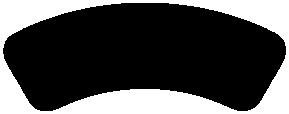


Manchester Grand Hyatt San Diego, California

36 NATIONAL CATTLEMEN SPRING DIRECTIONS 2023 www.N CB A.org #BEEF M EE T

Continued from page 36
How Does This Affect You?
As research indicates, the beef industry relies on producer-driven genetic improvement.2 In the cow-calf sector, this is especially the case. Investing in better breeding decisions can result in your herd using resources more effectively while maintaining, or improving, production levels.2
When we hear about sustainability and the role genetics play in that space, it often comes back to the idea of more efficient production from the cow, your management practices and the land. If you are able to achieve this, especially increased cow efficiency, you will not only reduce the beef industry’s environmental footprint, but you will also increase profitability for yourself.2
“Improving cow efficiency and sustainability is a multifaceted challenge, providing multiple avenues for improvement. These could come from direct interventions to increase forage-use efficiency or decrease greenhouse gas emissions. Other traits such as fertility, longevity and animal health can also affect the overall sustainability of cow-calf production,” Rowan said.2
Breaking it down, it seems simple. Those are often traits producers seek to improve on their own accord, let alone as a method of improving industry sustainability. However, it is through easy connection that Rowan shares this concept: almost all the traits that drive sustainability are the same as the traits that drive profitability.1
When we think back on the pressure the beef industry is facing to increase efficiency, particularly on a cow-calf level, our ability as producers to influence the productivity of a cow through genetic selection is the key.
What Can You Do?
Part of understanding your role as a producer in this effort is drawing the connection between the decisions on the farm or ranch and the complexity of sustainable beef production.
“Efficiency in cow-calf systems can take multiple forms, from metabolic efficiency to feed efficiency to production efficiency to

economic efficiency,” Rowan explains. “We can view sustainability through a similar lens, from raw per-animal emissions to emission intensities to the economic sustainability of the industry.2”
As producers, making those improvements in feed efficiency, production efficiency and other areas is something many are already working to do. Afterall, it just makes good business sense. However, continuing to place focus on genetic selection can also help drive long-term progress for our industry.
Making genetic decisions is one of the most powerful tools we have as beef producers. Many of the traits linked to cow efficiency and sustainability are heritable.2 According to Rowan, the easiest way to improve those traits is through crossbreeding.1
“Heterosis affects each trait involved in cow efficiency and sustainability. As a result, the widespread adoption of crossbreeding programs could be one of the single most effective strategies for increasing emissions efficiency industry wide,” Rowan explained.
While crossbreeding is an accessible tool for increasing cow efficiency, it is just one of the many options available to producers. There are a variety of tools that already exist that can increase forage-based beef production, and they exist in the form of Expected Progeny Differences (EPDs).2
EPDs allow you to select for traits such as feed efficiency, mature cow size and longevity, which are many of the same traits that were said to be linked to sustainability. Investing in these genetic decisions and monitoring the performance of your cow herd can make a notable difference in our industry-wide progress.
“If we can measure a trait, we can make genetic predictions in the form of EPDs, and when we have genetic predictions, we can accelerate genetic progress,” Rowan stated.1
What is the Industry Doing?
Improving the sustainability of the beef industry is not just a weight placed on the shoulders of producers. Businesses across the world are recognizing the role genetic advancements play in sustainability.
Continued on page 40
38 NATIONAL CATTLEMEN SPRING DIRECTIONS 2023
You do it for the cattle. Now do it for your road ahead. BQA transportation certification helps increase consumer confidence in beef. Get BQAT certified online today. www.BQA.org

Continued from page 38
“As individual cattle producers and as the collective beef industry, we will continue to be asked to do more with less, as it relates to environmental and economic sustainability,” said Jack Ward, executive vice president of the American Hereford Association (AHA).

It is with this idea in mind that the AHA partnered with Colorado State University (CSU) on a research project seeking to enhance understanding of the genetic differences in seedstock relative to enteric methane production and nitrogen excretion, a byproduct of rumen fermentation. The research includes identifying selection tools that can help reduce beef’s carbon and environmental footprint.

Outside of the research space, companies are actively engaging in conversations that are driving change. For example, both ABS and the AHA are active members of the U.S. Roundtable for Sustainable Beef (USRSB). By engaging with an organization such as the USRSB, industry professionals are able to identify and discuss issues impacting producers around the world. As ABS shared, “We must have a voice within organizations to convey the often-overlooked component in the sustainability discussion — genetics.”
Interested in Learning More?
If you are interested in learning more about genetic improvements and what you can do on your operation to advance beef industry sustainability, check out Rowan’s webinar “Tools for Breeding an Efficient and Sustainable Cow,” a feature of NCBA’s Cattlemen’s Webinar Series and found on YouTube.

Sources
1. Rowan, Troy. Tools for Breeding and Efficient and Sustainable Cow, 22 Feb. 2023. https://youtu.be/Xyp-I9QPhXA

2. Rowan, Troy. (2022). Invited Review: Genetic decision tools for increasing cow efficiency and sustainability in forage-based beef systems, Applied Animal Science, 38(6), 660-670, https://doi.org/10.15232/aas.2022-02306.
TOUR COMING NEAR YOU!
May 10th - 12th
Farmington, NM
June 13th
Norfolk, NE
June 15th
McCook, NE
August 18th
Fort Collins, CO
September 15th - 16th
Ontario, OR
September 29th - 30th
Caldwell, OH
REGISTER TODAY!
stockmanshipandstewardship.org
40 NATIONAL CATTLEMEN SPRING DIRECTIONS 2023
2023




Generation after generation, our customers have been our true motivation. You are our inspiration to deliver what’s next — high-quality, technology-driven, land and animal management solutions produced with the intention of making your business more productive and more profitable. Because at Gallagher, our aim is to make your life on the farm easier — generation after generation. The Next Generation of Land and Animal ManagementTM 1.800.531.5908 | am.gallagher.com ELECTRIC FENCING & ROTATIONAL GRAZING WEIGH SCALES, LOAD BARS, & EID READERS WIRELESS DATA MANAGEMENT AUTOMATIC WATERING SYSTEMS TOXIN-FREE & HUMANE PEST CONTROL The W-1 Weigh Scale is compatible with EID and our Wireless Load Bars using WiFi connectivity. You can sync your animal data straight to the Gallagher Animal Performance web and mobile app.
The Hundred Dollar Difference
How to Increase Efficiency and Profit on Your Operation
 By Dusty Abney, Ph.D. Cargill Animal Nutrition
By Dusty Abney, Ph.D. Cargill Animal Nutrition
In a recent conversation with a well-respected customer, we talked about the downstream effects that market changes were having on feeding cattle. Shifting directions, he asked, why do I see a hundred-dollar difference per head in profit, depending on the custom cattle feeder? To be clear, he doesn’t just feed one pen of cattle; he has fed cattle for decades and may place them in as many as eight or more yards in three or four states in any given year.
It would have been easy to brush him off with a vague answer about the yard’s proximity to ingredients, the health of their cattle, and a special focus on ration formulation. However, our conversation about his experiences discounted those factors and we ended up talking more about the operational aspects instead.
That conversation made me wonder, why is there such a wide variety in profit margins in the cattle business? That disparity isn’t just limited to feedlots. Cow-calf and stocker operators also have a wide spectrum of profitability and plenty of opportunities to improve. It’s important to understand that what I’ll discuss in this article are areas where everyone wins. None of these ideas will require new equipment, infrastructure or a product.
How to Achieve The Hundred-Dollar Difference
Begin by asking yourself, where would your time and energy best be focused? This is the perfect example of when an outside
perspective can be beneficial. Your traditional focus has gotten you this far, but is that where you should be spending your time? Really ask yourself, what am I not a subject matter expert in? For a lot of producers I work with, that area is nutrition.
The next step is probably the hardest one of all — actually, reaching out for help. Admitting we need help is never easy, but it’s almost always the action that results in improvement.
Ingredient cost and availability, animal health, and a good ration are important factors that affect profitability. Realistically, there’s very little we can do about where a yard is located and what ingredients are available, much less what the market prices are for them.
Animal health is an area where a lot of time, energy and money is spent to maximize performance. Examining the latest in vaccines or antibiotics takes up a lot of mental real estate for us. Health is something that will reassert itself frequently, even if we don’t want to spend a lot of time thinking about it. We talk about health a lot because it’s important, but the results of improving health are only seen in the animals who are ill or might reasonably become sick. Some of The Hundred-Dollar Difference is made by a doctoring crew, but not most of it.
We must remember not to let actions we are forced to take in times of drought or other trials (i.e., supply chain disruptions) become our new standard operating procedure. Sure, you got away with not feeding your cows a free-choice mineral for a month when you didn’t have time to get it done. However, the
42 NATIONAL CATTLEMEN SPRING DIRECTIONS 2023
medium or long-term effects of any nutritional shortage will ultimately come back to assert themselves. We all know any negative outcome will happen at the worst possible time.

Thanks in part to the smallest cow herd in the U.S. since the early 1960s, we are poised to see profitability in all the segments of the cattle industry. After the hardships and challenges of the last few years, that’s welcome news. I believe that we should have a plan in place for where and how that money will be reinvested in your operation before it happens. It’s easy to think about buying a new pickup, but will that investment be what helps drive your profitability in the inevitable lean years? Would you be better served to spend some money on infrastructure instead?
Ration quality is probably the easiest place to have an impact over the shorter term, but rations can’t be formulated in a bubble independent of how the operation is managed on a day-to-day basis. Balancing a diet without understanding the capabilities of the facilities and employees is a recipe for disastrous results in health, performance and profitability. This is true whether it’s a 50,000-head feedyard or a 25-head cow-calf operation.
How and What Cattle Are Fed Affects Every Animal Every Day

There are more dollars to be gained in the area of operations than several of the other areas combined. It doesn’t matter how great a ration is, or how many dollars per dry matter ton the nutritionist saved you if you can’t read/call bunks, mix, and deliver that diet as efficiently and consistently as possible. It’s often the case that a mediocre diet executed well by a great crew can outperform a great diet that isn’t.

NATIONAL CATTLEMEN 43 SPRING DIRECTIONS 2023
While there isn’t room here to go into detail about operational efficiency, it’s another area that benefits anyone who improves it, regardless of how they contribute to the beef industry. Because feed is one of our most expensive inputs, how we handle and distribute it is of great importance. For instance, the loss of feed, also known as shrink, can cause the actual money you spend on nutrition for your cattle to skyrocket. No matter how careful you are, shrink occurs every time feed is handled or moved. Being more intentional in how we store, move, and deliver feed can greatly reduce shrink.
Even great operations have a shrink of about 5%-10%. Consider the effect of a 15% shrink on a feed or ingredient that originally cost $300 per ton. We now have 85% of what we paid for, which means that our real cost is more than $350 per ton ($300 ÷ 0.85 = $352.94).
Remember that everything we feed experiences shrink. It doesn’t matter if it’s an ingredient like distillers’ grains, hay or silage. In fact, sometimes shrink happens just through improper storage. Consider haylage or bailage in those pretty, white plastic bags that are becoming so popular. Harvesting that material at the wrong moisture content, not sealing it well, or allowing the bag to become torn after stacking it can all cause a significant amount of loss. Forage is expensive, so do your best not to add to that cost by carefully considering shrink.
Forage shrink might not seem like a big deal; however, it costs our industry a huge amount every year. In the winter, most cow-calf operations rely heavily on stored forages. It’s easy to see how that could have negative effects on their bottom line. Feedlot operators might not take forage shrink as seriously because it’s a smaller percentage of the dry matter they feed. Those folks should remember that, on a cost of gain basis, forage is the most expensive part of their diets. Losing more than necessary to shrink will only exacerbate that.

This is where developing a strong relationship with your nutritionist is of huge importance. Once a nutrition professional
understands your goals and your constraints, they can work to develop not just rations, but a feeding plan to help you get the most out of what you have. A great nutritionist will explain their recommendation and spend time with you and your team to help achieve your goals. The bulk of The Hundred-Dollar Difference lies in the teamwork between your team and your nutrition professional, and how well you perform within the feeding plan you develop together.
That sounds great, but the difficult part of it is executing the plan once the nutritionist leaves. You will probably find that doing a good job in feeding operations will prompt your nutrition professional to get even more nitpicky on their next visit. That’s praise from them, of a sort, because they see that you have the capability to continuously improve.
Many nutritionists will put your operation through a bit of a qualification process to make sure you have the skill required to handle a diet that is less “safe.” If your crew hasn’t proven themselves able to do that, then the training wheels tend to stay on. Every team has limits to their skillset. It’s one aspect of a nutritionist’s job to push and teach your team to get better. When that improvement happens, everyone wins.
Hitting all the marks on how, when, and what you feed isn’t fun, but it is profitable. Remember that it affects every animal every day, for better or for worse. Keep in mind that if you procrastinate about discovering and fixing these issues, you are still making a decision. You just decided not to improve and will have to live with the consequences.
While there aren’t many hundred-dollar bills waiting to be scooped up with ease on your operation, there are plenty of fives, tens and twenties to find if you seek to understand. Which end of The Hundred-Dollar Difference do you want your operation on?
44 NATIONAL CATTLEMEN SPRING DIRECTIONS 2023
Automation for commercial feed delivery
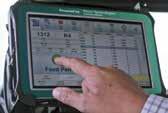
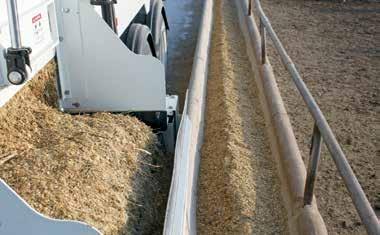
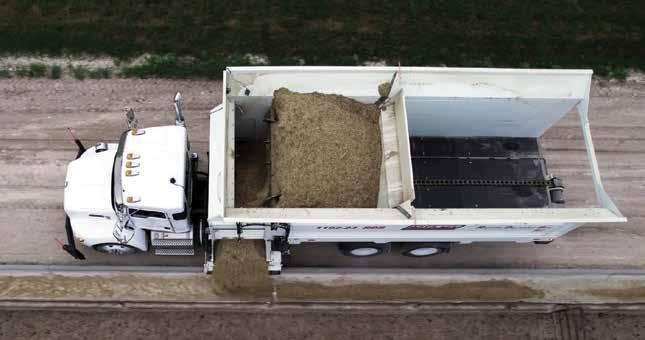
Auto-Feed System
Designed for the Roto-Mix Ration Delivery Box
RDB models 822-17, 1102-23, and 1202-25.
• Increased feeding efficiency.
• Even distribution of feed.
• Reduce or Eliminate backing up.
Ration Delivery Box
• Controls the throttle, ground speed and all RDB functions.



• Produces more consistent feeding down the bunk.
• Provides better control of call weights.
• Utilizes Micro Technologies and Animal Health International feeding systems.
• The system learns and adjusts feed rate for different rations based on the call weight and delivered rate.
• Ability to feed partial sections of bunk to accommodate lower head counts in large pens.

• Stainless liners, 60" high.
• 48" wide stainless steel conveyor body.
• Side access door in conveyor body.
• Automatic sensor above conveyor pauses floor belt movement.
• Spout with magnets optional.
• One piece full width floor belt.
• Truck mounted scale and hydraulic controls.
• Full length scale frame.
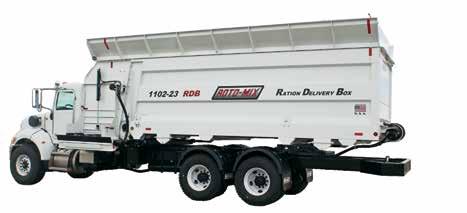
™ Patent Pending
www.rotomix.com 620.225.1142 Call for more information! AFS RDB
Keeping Beef at the Center of the Plate
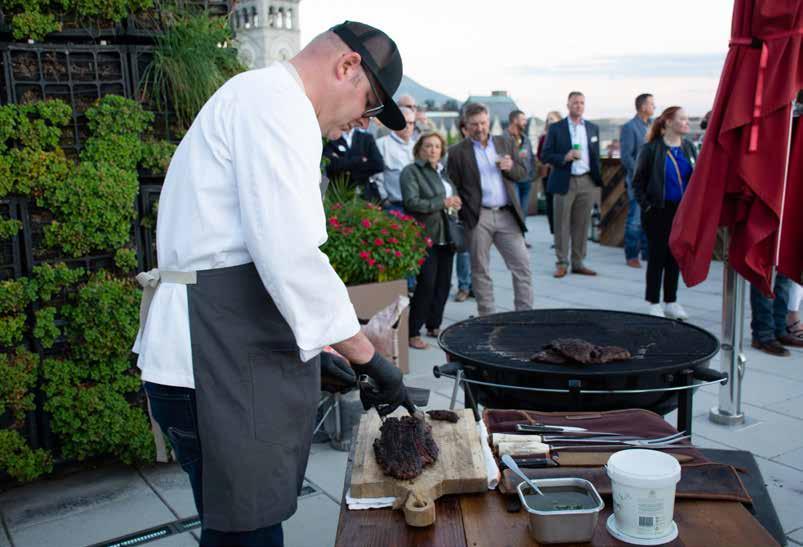
Messaging to Tomorrow’s Consumer
By Danette Amstein Managing Principal, Midan Marketing
I drive about 15 miles of highway regularly to get from my home to my office. And this stretch of interstate happens to be in the middle of NASCAR country. It’s not uncommon for someone to pass me and make me feel like I must be standing still. Depending on how my morning is going, I might think to myself that the driver is dangerous, or I might chuckle and call them a NASCAR driver wannabe. But those are all assumptions — in fact, I have no idea why that person is choosing to fly down the interstate.
Isn’t it interesting how our brains make assumptions all the time? We subconsciously draw upon past experiences, find patterns, and assume based on this data. According to David McCormick, a neuroscience researcher at Yale, “There are over one hundred billion cells in our brain, and each of them makes over 10,000 connections with other brain cells. While the large number of possible combinations of cell connections allows for higherordered thinking, this is a big problem evolutionarily in terms of energy cost.”
McCormick goes on to explain that in order to save energy and make this process more efficient, our brains make assumptions.1
In February, I was honored to speak during Cattlemen’s College at the Cattle Industry Convention about how messaging to tomorrow’s consumer can help keep beef at the center of the plate. A big part of my presentation was how messaging is needed to help clear up incorrect assumptions consumers are currently making about beef and the industry.
Shopping for groceries is an instance where our brains can go into overdrive, making assumptions to help us make decisions quickly from a large number of choices. And we know, both from experience and from research, that some of the assumptions consumers make when choosing proteins are not correct. That’s why it is our job to share information they need to make a more accurate subconscious assumption in the future.
Some consumers may feel pressure to reduce the amount of meat in their diets based on inaccurate information. The percent of selfdescribed flexitarians reached a peak of 17% of the U.S. population in 2021 and has now fallen back to 13%. Fortunately, today about 75% of meat eaters and even 65% of flexitarians agree that meat and poultry belong in a healthy, balanced lifestyle.2 So we, as an industry, need to do everything in our power to give those who want to eat meat permission to do so guilt-free.
Continued on page 48
46 NATIONAL CATTLEMEN SPRING DIRECTIONS 2023
CUT. RAKE. BALE REPEAT.™
From first cut to last bale, New Holland hay and forage equipment helps you make top-quality hay and make it more productively—day in and day out. That’s the advantage of our over 125 years of invention and innovation. New Holland haytools save you time and money, all while maximizing quality and feed value. You’ll also work more confidently, knowing your local New Holland dealer is there with unparalleled service and support when it matters most. Cut, rake, bale, repeat—no one does hay better.




©2023 CNH Industrial America LLC. All rights reserved. New Holland is a trademark registered in the United States and many other countries, owned by or licensed to CNH Industrial N.V., its subsidiaries or affiliates.
newholland.com
NCBA Members qualify for exclusive savings on New Holland Equipment.
Continued from page 46
Right now, consumers’ top reason for reducing their meat consumption is price, but as the price of beef has been slowly coming back down in 2023, other reasons may cause them to pause before they pick up a package of beef or order beef on a menu. Some of the other reasons consumers say they are reducing their meat consumption include2:
• 33% of consumers have concerns about the healthiness of eating meat.
• 28% have concerns regarding antibiotics, hormones and chemicals.
• 27% are concerned about the environment.
• 25% are concerned about animal welfare.
Sharing more of the story of what farming and ranching truly looks like can help consumers avoid assumptions that make beef a concern for them. Let’s look at an example I shared during Cattlemen’s College — distillers’ grains. When I hear about a cattleman feeding distillers’ grains, I don’t give it a second thought. But put yourself in the consumers’ shoes for a minute — we’re feeding cattle the spent grains from making beer? A consumer may think that doesn’t sound particularly nutritious. And, if they’re unfamiliar with the process of making alcohol or ethanol, they may even think cows can get intoxicated from these grains (yes, I have been asked about this before). As a consumer, not understanding the nutrient value and the awesome way we use a byproduct as feed may cause me to reconsider my next cheeseburger craving. See how easy it is for misinformation or a gap in information to dissuade a person? This is an assumption that we can easily correct by sharing information more often with our consumers. Distillers’ grains contain a lot of fat and protein that provide energy for cattle, and it’s earth friendly as these grains had otherwise out lived their potential. But consumers won’t know unless we tell them.

According to a 2022 Gallup Poll, 57% of Americans have a positive view of the U.S. farming and agriculture industry. This is the second highest of any business sector they surveyed — the restaurant
industry came in ahead of us at 60%.3 Furthermore, 58% of consumers trust beef ranchers to produce a healthy product and 51% trust that we’re treating animals humanely.4 While none of these numbers are earth-shattering, they’re still positive. They show that even if consumers don’t trust “big ag” and what they perceive as “factory farming,” they do trust producers. Their confidence is in the individual cattleman. Lucky for us, your stories are exactly the ones consumers need to hear.
So how do we, as an industry, start to tell our stories? One way is harnessing the power of social media. I know posting about your farm can be really intimidating. I do meat marketing all day, every day and still get a little nervous when I’m posting about the farm on my personal Facebook or Instagram pages. My hope, though, is to make it easier — even if it’s still intimidating. There are four steps to getting started:
1. Pick your platform:
Facebook and Instagram are both safe bets if you’re new to posting on social media. One of the great things about both is that, with personal accounts, the folks who will see your post are people you’ve intentionally connected with. This is a great way to dip your toes in and get comfortable sharing your story. I know when I post on Facebook, I always get overwhelmingly positive feedback. I know you may feel like you are preaching to the choir — other farmers and ranchers. You are, but every one of us in ag have friends who are not, and as your message is liked or commented on, those friends begin to see it in their feed (Tip: Be sure you make your farm education posts public so they can be seen by a wider audience).
2. Share photos or videos:
Content with a visual component performs better on social media because it gets attention faster. It has the added bonus of showing folks what life on the farm is like. If you’re worried the photo shows
Continued on page 50
48 NATIONAL CATTLEMEN SPRING DIRECTIONS 2023
TEXT BEEF TO 877-319-2142



convention.ncba.org Where the B EEF INDUSTRY meets! JANUARY 31 - FEBRUARY 2, 2024
Continued from page 48 something that consumers don’t understand or are making wrong assumptions about, great! Now you have the opportunity to explain it. With our added human touch, that scary chute we use when vaccinating animals can be equated to a parent’s embrace while their young child is getting their shots.
3. Be a bit vulnerable:
Sharing part of your story and the emotions you’re feeling is a big part of this ask. Emotions in a post allow others to relate to your story and feel connected to both you and your ranch. Show that despite the blizzard raging outside, you’re still out in it assisting the one momma who is calving. Show the absolute excitement and joy that comes during calving season or harvesting a bountiful crop. Show the highs, show the lows, and show that real humans are doing this work every day.
4. Get help:
I know for a lot of cattlemen (my dad included), that iPhone in your pocket is for phone calls and maybe sending a text or snapping a picture. Asking you to even think about Instagram or Facebook is a lot. That’s okay! Hand the phone to the “youngins” that you’re desperately trying to get engaged on the farm. Let them take the photos and videos for you. Let them post on your Facebook. Let them do a silly TikTok dance with your cattle watching from behind. They’ll be engaged, and you’ll be sharing your story. That’s a win for you, for them and for the cattle industry.
The wannabe racecar driver that zooms around me during my drive may have a valid reason for driving that fast. Maybe his kid is about to undergo surgery, and he’s racing to the hospital. Maybe he got a call that his house is on fire. Maybe my assumptions about why he’s driving so dangerously are totally off base. And maybe our consumers’ assumptions are the same way — simply not based on all the facts. The only way we can change that is to give them the facts.
Our industry is working toward one goal — consumers happily enjoying beef as a regular part of their meals. But they need our help to make meat a priority. If we don’t tell our own story, they’ll either hear it from somebody else (which we don’t want) or they’ll fill in the gaps with their own assumptions. The only way to stop that is for us to tell our stories and show them what life on the farm really looks like. I’ll keep sharing glimpses from my little corner of Kansas. I hope that you, too, will consider what part of our industry’s story you can tell.
For inspiration, follow Midan Marketing on social media to see how we are sharing the stories of our clients and their producer partners.

Sources
1. Frank Han, Yale Scientific: How the Brain Saves Energy: The Neural Thermostat, September 2010.
2. Anne-Marie Roerink, Principal, 210 Analytics LLC, The Power of Meat 2023, Report sponsored by Sealed Air Food Care Division/ Cryovac® and Published by FMI and the Foundation for Meat & Poultry Research & Education
3. Gallup, Image Ratings of Several U.S. Industries, September 2022
4. NAMI Protein PACT, Trust in Industry Webinar, June 2022
50 NATIONAL CATTLEMEN SPRING DIRECTIONS 2023
Feedlot Nutrition in Today’s Climate
Tactics For Improving Animal Health and Productivity
 By Zachary Smith, Ph.D. Department of Animal Science, South Dakota State University
By Zachary Smith, Ph.D. Department of Animal Science, South Dakota State University
Three factors that influence the profitability of a cattle feeding enterprise include: an abundant supply of feeder cattle, readily available and economically priced feed, and a favorable production environment. For example, in South Dakota, we are fortunate to be close to an abundance of quality feeder cattle and feedstuffs. However, South Dakota must combat wintertime and summertime weather conditions which challenge even the best cattle feeders. Challenges to cattle and their caretakers in the wintertime include cold temperatures, wind, snow and freezing rain, all of which result in undesirable pen surface and cattle hide conditions. Challenges to cattle and their caretakers in the summertime include warm weather and humid conditions, coupled with very long days with limited opportunity for nighttime cooling.
Mitigation of Environmental Stress in Feedlot Cattle
Bedding application as a means to improve cattle comfort during wintertime has been commonplace for Northern Plains cattle producers for many years. However, the exact degree to which bedding application improves growth performance has not been well established. As such, an experiment was conducted at the Ruminant Nutrition Center in Brookings, South Dakota, from January to July of 2019. The goal of bedding application was to ensure all steers within a bedded pen had a dry spot to lay down at all times during the course of the experiment. Steers that received bedding were provided on average 4 lbs (as-is basis) of wheat straw bedding per day. The average ambient temperature and the average wind chill was 5.2°F and -0.3°F for the first 36 days on feed (January to February) and 39.8°F and 37.3°F for the cumulative feeding period that lasted from January to July.
Steers from the bedded treatment had 4.2% greater body weight on day 36, 48% increased average daily gain, and were 74.4% more efficient in the first 36 days. During the entire finishing
period, steers from the bedded treatment had increased average daily gain by 21%, greater dry matter intake by 5.9%, improved feed conversion by 14.6%, and required 35 fewer days on feed to reach an industry acceptable level of rib fat compared to nonbedded steers.
The return on investment (ROI) for bedding after accounting for labor, equipment and material needs ranged from 2:1 to 1:1 depending upon bedding material cost. While the ROI was modest with more expensive bedding, a key point here is that one will likely incur the cost associated with bedding cattle no matter what they choose to do (i.e. the extra 35 days of yardage and feed costs for the non-bedded steers). Another factor to consider is for an integrated crop-livestock business the nutrient value of the crop residue will be returned to cropland as part of the manure, hence, reducing the net cost of the bedding. There are also less tangible, but still important, benefits to bedding that should be considered like enhanced visual appeal of cattle to be sold as backgrounded feeders and improvements in overall cattle comfort and welfare. These data indicate that enhancements of growth performance for bedded steers compared to non-bedded steers were not solely attributable to increased dry matter intake, but rather, reducing the impact of cold-stress on their maintenance energy requirement.
Summer in the Northern Plains is generally quite pleasant. There are times, however, when summer feeding conditions can severely impact cattle growth performance. Typically, the worst summertime feeding conditions occur sometime during June or July. Warmer weather coupled with limited nighttime cooling and humidity create many challenges to cattle feeders. While we cannot control Mother Nature, we can work to ensure cattle comfort and productivity by altering time of feeding, providing access to additional sources of water, and not shipping or handling cattle during extreme heat events.
In the summer of 2022, we had a set of black-hided steers on
NATIONAL CATTLEMEN 51 SPRING DIRECTIONS 2023
feed at the Southeast Research Farm located near Beresford, South Dakota. All steers were placed on feed at the same time, were of similar genetic make-up, and had been under our care since early March. These were high-quality steers that had been well backgrounded the previous winter and had tremendous growth potential. For the cumulative feeding period, cattle growth performance was within 1% of expectations based upon intake and diet energy density. From early May to early June, cattle growth performance was 4% better than expectations (range of 13% better to 5% poorer) based upon intake and diet energy density. From early June to early July, cattle growth performance was 33% poorer than expectations (range of 3% to 65% poorer) based upon intake and diet energy density. Upon further investigation, it was revealed the cattle that performed the poorest were in a location in the feedyard with the poorest wind movement across the feedyard (Figure 1; Location 1). These pens were surrounded by the shelterbelt to the west and an old hoop-barn to the south. The cattle that performed the best were on the side of the feedyard with the best opportunity to capture wind movement across the feedyard (Figure 1; Location 6). These data indicate that understanding potential problem areas within the yard can allow for more timely and meaningful heat stress mitigation practices. The shelterbelt provides protection from the north wind during winter months coupled with the old hoop-barn resulted in poor air movement across the pen for cattle fed in Location 1. Pens with greater protection for wintertime feeding can become problem areas during the summer months.
Economic Benefits of Implanting Finishing Steers


Beef cattle producers must choose the best production system for their situation. Conventional production systems use steroidal implants with anabolic activity, ionophores and betaadrenergic agonists to improve animal productivity; feed grade and injectable antimicrobials are also used to control, treat or prevent disease, and improve animal health. For the purpose of this discussion, we will only discuss steroidal implants with anabolic activity. Steroidal implants with anabolic activity have been safely used to enhance food security and environmental sustainability for nearly 66 years. Typically, implants increase average daily gain by 10%-30%, slightly increase intake, and enhance dry-matter feed conversion by 5%20%. Technologies like steroidal implants with anabolic activity, in part, have allowed each cow on the prairie to produce 50% more beef than she did in 1980. Put another way, U.S. beef producers produce as much beef today with a cow herd that has 33% fewer cattle than in 1980. However, some prefer to have beef raised without conventional technologies. Not using these technologies increases the cost of production. These production losses must be off-set by premiums when the cattle are marketed and sold.
Premiums for non-hormone treated cattle (NHTC) can easily reach up to $25/cwt compared to implanted cattle. While this seems like a very nice premium, it is important to remember that a single finishing phase implant can add up to an additional 100 lbs. of carcass weight. If the carcass price for the finished cattle is $250/cwt, and a single implant can increase carcass weight by 100 pounds, we can assume the non-implanted steers would have an 800 lb. carcass and the implanted steer would have a carcass weight of 900 lbs. The cost differential is an extra $250 per steer of additional revenue at the time of selling, when this $250 per steer of additional money is divided by the carcass weight of the steer, the value of the additional weight gain is $27.77/cwt. When the math is presented in this manner, the $25/cwt premium for the non-implanted steer is not nearly as attractive. A disclaimer here, the math is not as simple as shown here due to the fact that additional feed intake by the implanted cattle was not considered, alternatively, increased initial purchase cost for the NHTC feeder calf was also ignored in this example. The purpose of this demonstration is to show that you should always run the numbers and not be lured into a management strategy that appears to generate more income based solely upon a “premium.”
Conducting applied confinement cattle research in the 21st century is exciting. We have much to be proud of in regard to enhancements in productivity in the last 40 years. The challenge moving forward is to keep the momentum. In 1980, I am sure beef producers looked back on the previous 40 years and thought, how will we ever make the same progress since 1940? They stepped up to the plate and made huge progress. It is now time to make the same commitment. Doing so will guarantee beef is at the center of the plate, and beef will remain the undisputed and preferred protein both domestically and internationally.
52 NATIONAL CATTLEMEN SPRING DIRECTIONS 2023
Figure 1. Aerial view of the Southeast Research Farm Located near Beresford, South Dakota.

Invora® herbicide doesn’t just stunt mesquite and huisache growth — it stops it. Using our next-generation herbicide with our next-generation vegetation identification technology gives you guaranteed control. With Invora herbicide and RangeView™ analysis, you can identify and help eliminate unwanted brush so nutritious forage can thrive. It’s all backed by our five-year performance guarantee. Start investing in your long haul at rangeview.envu.us Guaranteed for the long haul. Next-generation mesquite and huisache control ALWAYS READ AND FOLLOW PESTICIDE LABEL DIRECTIONS. Invora ® Herbicide is a RESTRICTED USE PESTICIDE. Prior to spraying, all applicators must complete picolinic acid herbicide training. Environmental Science U.S. LLC, 5000 CentreGreen Way, Suite 400, Cary, NC 27513. For additional product information, call toll-free 1-800-331-2867. www.envu.com. Not all products are registered in all states. Envu, the Envu logo, Invora ® and RangeView are trademarks owned by Environmental Science U.S. LLC or one of its affiliates. ©2023 Environmental Science U.S. LLC. Scan to sign up for a RangeView analysis and Invora herbicide treatment recommendations.
As versatile as the farmer who uses it.
That’s the promise of the 6E.
When cutting a hayfield, mowing a roadside and lifting dense round bales is all in a day’s work, efficiency gained is gold. Both experienced pros and new operators benefit from the intuitive controls, smooth handling and improved comfort. Get more utility from your utility tractor with the 6E. Available with your choice of a 12F/12R or 24F/12R PowrReverserTM transmission, up to 135 horsepower, open station or cab, 2WD or MFWD. With maximum utility comes maximum production. Talk to your John Deere dealer about this all-in-one tractor.
JohnDeere.com/6E
JohnDeere.com/MoCo

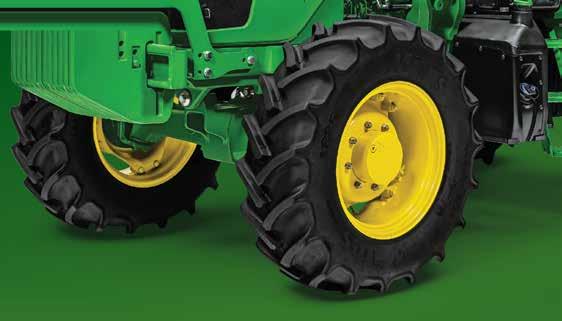


JohnDeere.com/Balers







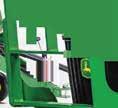

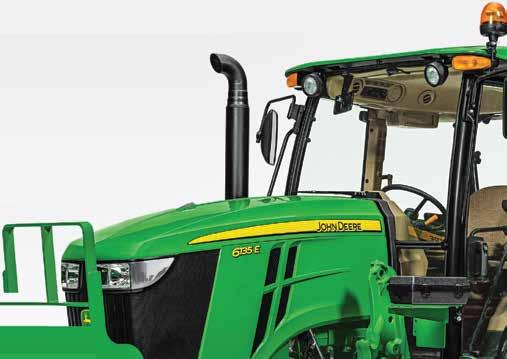
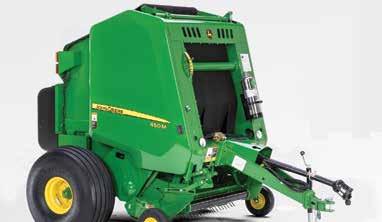




















































 By George Perry, Ph.D. Texas A&M University
By George Perry, Ph.D. Texas A&M University































































 By Dusty Abney, Ph.D. Cargill Animal Nutrition
By Dusty Abney, Ph.D. Cargill Animal Nutrition






















 By Zachary Smith, Ph.D. Department of Animal Science, South Dakota State University
By Zachary Smith, Ph.D. Department of Animal Science, South Dakota State University













